

Zitierweise / cite as:
Payer, Alois <1944 - >: Chronik Thailands = กาลานุกรมสยามประเทศไทย. -- Chronik 1986 / B. E. 2529. -- Fassung vom 2017-03-19. -- URL: http://www.payer.de/thailandchronik/chronik1986.htm
Erstmals publiziert: 2012-10-09
Überarbeitungen: 2017-03-19 [Ergänzungen] ; 2017-01-10 [Ergänzungen] ; 2016-12-18 [Ergänzungen] ; 2016-11-30 [Ergänzungen] ; 2016-04-08 [Ergänzungen] ; 2016-03-25 [Ergänzungen] ; 2015-08-30 [Ergänzungen] ; 2015-06-07 [Ergänzungen] ; 2015-05-27 [Ergänzungen] ; 2015-05-07 [Ergänzungen] ; 2015-02-26 [Ergänzungen] ; 2015-02-13 [Ergänzungen] ; 2014-11-25 [Ergänzungen] ; 2014-10-08 [Ergänzungen] ; 2014-09-23 [Ergänzungen] ; 2014-09-09 [Ergänzungen] ; 2014-08-21 [Ergänzungen] ; 2014-04-10 [Ergänzungen] ; 2014-02-19 [Ergänzungen] ; 2013-10-28 [Ergänzungen] ; 2013-05-22 [Ergänzungen] ; 2013-04-08 [Ergänzungen] ; 2013-01-23 [Ergänzungen] ; 2013-01-13 [Ergänzungen]
©opyright: Dieser Text steht der Allgemeinheit zur Verfügung. Eine Verwertung in Publikationen, die über übliche Zitate hinausgeht, bedarf der ausdrücklichen Genehmigung des Herausgebers.
Dieser Text ist Teil der Abteilung
Thailand von
Tüpfli's Global Village Library
ช้างตายทั้งตัวเอาใบบัวปิดไม่มิด
|
Gewidmet meiner lieben Frau Margarete Payer die seit unserem ersten Besuch in Thailand 1974 mit mir die Liebe zu den und die Sorge um die Bewohner Thailands teilt. |
|
Bei thailändischen Statistiken muss man mit allen Fehlerquellen rechnen, die in folgendem Werk beschrieben sind:
Die Statistikdiagramme geben also meistens eher qualitative als korrekte quantitative Beziehungen wieder.
|
Statistische Daten 1986:
|
1933 - 1986
Abb.: Berufszugehörigkeit der Parlamentsabgeordneten 1933 - 1986
[Datenquelle: Anek Laothamatas [เอนก เหล่าธรรมทัศน์] <1954 - >: Business associations and the new political economy of Thailand : from bureaucratic polity to liberal corporatism. -- Singapore : Institute of Southeast Asian Studies, 1992. -- 202 S. : Ill. ; 24 cm. -- (Studies of the East Asian Institute). -- ISBN 981-3016-05-1. -- S. 33. -- Faire use]
1963 - 1986
Abb.: Unternehmer als Regierungsmitglieder 1963 - 1986 (in Prozent der Regierungsmitglieder)
[Datenquelle: Anek Laothamatas [เอนก เหล่าธรรมทัศน์] <1954 - >: Business associations and the new political economy of Thailand : from bureaucratic polity to liberal corporatism. -- Singapore : Institute of Southeast Asian Studies, 1992. -- 202 S. : Ill. ; 24 cm. -- (Studies of the East Asian Institute). -- ISBN 981-3016-05-1. -- S. 34. -- Faire use]
1967 - 1986
Abb.: Anzahl der Handelskammern in Provinzen 1967 - 1986
[Datenquelle: Anek Laothamatas [เอนก เหล่าธรรมทัศน์] <1954 - >: Business associations and the new political economy of Thailand : from bureaucratic polity to liberal corporatism. -- Singapore : Institute of Southeast Asian Studies, 1992. -- 202 S. : Ill. ; 24 cm. -- (Studies of the East Asian Institute). -- ISBN 981-3016-05-1. -- S. 40. -- Faire use]
1960 - 1994
Ausländische Touristen und Einnahmen aus ausländischem Tourismus:
Ausländische Touristen und Einnahmen aus ausländischem Tourismus, 1960 - 1994
[Datenquelle: Pocket Thailand in figures (1996), S. 145]
Abb.: Touristenort Pattaya (พัทยา), 2012
[Bildquelle: MarcoZdobro. -- http://www.flickr.com/photos/marcozdobro/6815733307/. -- Zugriff am 2012-02-08. -- Creative Commons Lizenz (Namensnennung, keine kommerzielle Nutzung, share alike)]
Abb.: Lage von Pattaya (พัทยา)
[Bildquelle: OpenStreetMap. -- Creative Commons Lizenz (Namensnennung, share alike)]
1976 - 2011
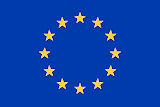
Netto-Entwicklungshilfe von Institutionen der Europäischen Union (EU)
Abb.: Netto-Entwicklungshilfe an Thailand von Institutionen der EU 1976 - 2011
[Datenquelle: http://www.indexmundi.com/facts/thailand/net-bilateral-aid-flows-from-dac-donors#DC.DAC.CHEL.CD. -- Zugriff am 20114-04-05]
1986
Video über die Behandlung von Malaria, Tollwut und Schlangenbisse an der Mahidol University (มหาวิทยาลัยมหิดล), Bangkok:
[Quelle des .mpg4-Videos: The Wellcome Trust in Thailand : malaria, rabies and snakebite (1986) / written by David A. Warrell and Leonard Goodwin. Narrated by Ray Moore. Directed by Douglas Fisher for the Wellcome Trust Film Unit. -- http://www.archive.org/details/Malariarabiesandsnakebite-wellcome. -- Zugriff am 2011-11-15. -- Creative Commons Lizenz (Namensnennung, keine kommerzielle Nutzung)]
1986
Gründung des Coordination of Hill Tribe Affairs and Eradication of Narcotic Crops in Nordthailand, der Third Army (กองทัพภาคที่ 3 - ทภ.3) unterstellt
1986
Substitute für Opiumanbau
Abb.: Verkaufsertrag von Schlafmohn und Ersatzpflanzungen 1986 (in 1000 Baht pro Rai - 1600 m²)
[Datenquelle: Sommart Sukonthathipak. -- In: Development or domestication? : indigenous peoples of Southeast Asia / ed. Don N McCaskill ; Ken Kampe. -- Chiang Mai : Silkworm Books, 1997. -- 631 S. : Ill. ; 21 cm. -- ISBN 974-7100-33-9. -- S. 76]
1986
Spezialkräfte der Thai Armee führen das thailändische Sturmgewehr Rung Paisarn (รุงไพศาล) RPS-001 ein. Es ist eine angepasste Form des tschechischen Vz.58 mit Komponenten des US M16A2.
Abb.: Rung Paisarn (รุงไพศาล) RPS-001
[Bildquelle: http://www.earmi.it/armi/atlas2/722.htm. -- Zugriff am 2013-10-28. -- Fair use]
1986
Vier weibliche Homosexuelle gründen die Gruppe Anjaree Thailand (อัญจารี) zum Kampf um die Rechte von homosexuellen Frauen. Anjaree gibt die Mitgliederzeitschrift Anjareesaan (อัญจารีสาร) heraus.
Abb.: ®Logo
Abb.: Titelblatt von Anjareesaan (อัญจารีสาร) Nr. 12 (1995)
1986

Siriporn Skrobanek [ศิริพร สะโครบาเนค] gründet das Women's Information Center. Es wird von deutschen Stiftungen unterstützt.
"The Foundation for Women (FWW) [] is a non-governmental organization based out of Bangkok, Thailand. The original establishment manifested in 1984 as Women’s Information Center giving advice to Thai women traveling overseas. In 1986 the FFW opened a women’s shelter for victims of domestic violence. The FFW focused on providing services such for Thai women such as shelters and education of human rights. In 1988 the FFW began its Kamla project, which centered on educating the Bangkok community on child prostitution and human trafficking. In 1922 the Kamla project reached a national awareness when the FFW's research was printed in the UN Plan of Action Combating the Sale of Children, Child Prostitution and Child Pornography. The FFW continues to aid women and children in the development of advocacy and autonomy in their communities by aiding in volunteer training through community biased work and connecting women to the proper authorities to voice their own opinions to facilitate problem solving and social change. The FFW provides assistance for individuals victim to gender based violence, including sexual and domestic violence. The foundation also participates in campaigning against marital rape and the ‘protection and prevention of the rights of women’. The FFW gains awareness through its proliferation of educational videos, newspapers, and national publications." [Quelle: https://en.wikipedia.org/wiki/Feminism_in_Thailand. -- Zugriff am 2016-11-30]
1986

Drei Studentinnen am Pattani (ปัตตานี) Teachers Training College tragen den hijab (حجاب), das Kopftuch muslimischer Frauen.
Abb.: World Hijab Day in Thailand, 2015
[Bildquelle: แขกสามมิติ. -- https://www.youtube.com/watch?v=cadaDBPjEEY. -- Zugriff am 2016-03-25. -- Fair use]
1986

Bunmi Methangkun (บุญมี เมธางกูร, 1908 - 1991), Präsident der konservativen buddhistischen Abhidhamma Foundation über Kathoey (กะเทย, Transgender):
"Through circles of life, and we don't know how many times we have been kathoeys in past lives or how many more times we may be kathoeys in the furture." [Übersetzt in: Jackson, Peter A. <1956 - >: Dear Uncle Go : male homosexuality in Thailand : สวัสดีกรับ อาโก๋ ปากน้ำ. -- Bangkok : Bua Luang, 1995. -- 310 S. : Ill. ; 21 cm. -- ISBN 0942777115. -- Völlige Neubearbeitung von Ders.: Male homosexuality in Thailand : an interpretation of contemporary Thai sources (1989). -- S. 220f., Anm. 1]
1986
Es erscheint der Film ฉันผู้ชายนะยะ ("Ich bin ein Mann, Liebling") von ML Bhandevanob Devakul (หม่อมหลวง พันธุ์เทวนพ เทวกุล, 1953 - )
Das Drehbuch stammt von เสรี วงษ์มณฑา [Seri Wongmontha] <1949 - >. Dr. Seri ist einer der ersten Thai-Männer, die sich als homosexuell geoutet haben.Vorlage ist der amerikanische Schwulenfilm The Boys in the Band (1970) von William Friedkin (1935 - ).
Abb.: Cover einer DVD-Ausgabe
[Bildquelle: th.Wikipedia]
1986
Premiere des Films ปลื้ม ("Erfreut", "Happy Go Lucky 2") von Adirek Wattaleela (อดิเรก วัฏลีลา, 1955 - ) und Tanit Jitnukul (ธนิตย์ จิตนุกูล, 1956 - )
Abb.: Filmplakat
[Fair use]
1986
Erfolgreichster Pop-Star des Jahres ist Pumpuang 'Peung' Duangjan (พุ่มพวง ดวงจันทร์, 1961 - 1992).
Künstlerlink auf Spotify:
URI: spotify:artist:7bssbqY8HKop2WbQs7meR6
URL: https://open.spotify.com/artist/7bssbqY8HKop2WbQs7meR6
Abb.: Cover
[Fair use]
"Pumpuang 'Peung' Duangjan (Thai พุ่มพวง ดวงจันทร์) (Birth name Rampheung Chithan - รำพึง จิตรหาญ, 1961 - 1992), or 'Poompuang Moon' as she was referred to in Thailand, was the professional name of a Thai megastar singer, actress who pioneered electronic Luk Thung (ลูกทุ่ง)). She is considered one of the most important Luk Thung vocalists in Thailand. The child of poor farmers, she came to attention as a teenager in the late '70s. Although she was illiterate, her lyrics were powerful and compelling stories of Thailand's rural poor. She adapted pleng luk thung (Thai country music) into a dance-ready form known as electronic luk thung. Her death in 1992, at the age of 31, led many to believe that her music form would die out. However, it has continued and in 1997 the first all luk thung radio station was opened. Biography Life and Success
Before Pumpuang, 'Luk Thung' (Thai Country Music) was very tame. However, Pumpuang's songwriter, composer and producer - 'Kru Lop Burirat' (ครูลพ บุรีรัตน์). An accomplished musician who played both Western and Thai music, Lop Burirat mixed them both together for a new style. In 1985 they produced the album 'Aue Hue Lor Jang' ( (อื้อฮือหล่อจัง, Oh, he's so cute!), which became a phenomenal success.
'Peung' and Kru Lop quickly released a succession of record-breaking albums including 'Hang Noi Thoi Nid' (ห่างหน่อยถอยนิด), 'Noo Mai Roo' (หนูไม่รู้) and 'Noo Mai Ao' (หนูไม่เอา). While there is no doubt that Look Thung owes Kru Lop a great much, it was 'Peung' who was in charge of her own self-promotion. She performed on stage in a variety of flesh revealing costumes giving her an outrageously sexy look which often brought a severe backlash from music critics and the older generation. Loved, but also loathed, she was criticized for trying to 'copy' Western popstar Madonna and lambasted for her Un-Thai sense of dress and flirtation.
Being undisturbed and completely ignoring her detractors, 'Peung' continued performing in the way she saw fit. Her audiences just loved it. Thailand had never seen anyone like it before! Pumpuang face graced the bigscreen as well, as she starred in various Thai films in career. On September 12, 1989 Pummpuang was given an award by HRH Princess Maha Chakri Sirindhorn (มหาจักรีสิรินธร). HRH Sirindhorn awarded her in the field of outstanding singing for the song "Land of Smiles" composed by teacher 'Rat Buri' in the second half century pastoral sector.
In recent times, a new generation of Look Thung artists such as Yui Yartyuth, Arphaphorn Nakhorn Sawan and Dau Mayuree all pointed to 'Peung' as their inspiration. Til this day she will always be remembered as 'the girl who put the spice into Luk Thung'. [2]
A Life Of Tears and SorrowPumpuang's journey is a 'rags to riches story' of an illiterate peasant girl who achieved legendary status as the 'Queen of Look Thung' is of almost mythical proportion. Though born in Kamphaeng Phet (กำแพงเพชร), central Thailand, she was brought up in Suphanburi province (สุพรรณบุรี) just north of Bangkok. As her family was so poor, 'Peung' was forced to drop out of school after just one year to help her parents in their sugar-cane fields.
Being unable to read did not deter Peung from picking up a microphone and learning by heart a collection of almost 100 songs by the age of twelve. Growing up and wanting to hit the big time, 'Peung' entered the notorious world of 'Cafe and Temple Fair' concerts as a dancer and singer. It was 'on this circuit' where she met her first husband.
The marriage was a rocky one and her husband later ran off with another girl. Adding injury to insult, he returned after the affair and eloped with Peung's younger sister - they married later. The man who married first Peung before her younger sister, was known to the public as an 'alcoholic womanizer' who did nothing but 'live off women'. Family feuds erupted and Peung's brother was sentenced to 15 years in prison after he had killed Peung's former husband in a fit of anger. Another of her brothers, brokenhearted at the rejection of a singer he wished to married, picked up a shotgun one day - placed it at his head and pulled the trigger.
Shortly after shooting to fame, Peung married again and had a baby son. More family quarrels erupted after Peung's mother blamed her new husband for taking advantage of Peung's illiteracy and having her unknowingly, sign over to him - her financial documents and earnings. The marriage did not last long and the couple separated over his supposed womanizing and extortionate spending (of her money)
Over time, Peung's health just went from bad to worse and she was hospitalized several times. In 1992, though still sick, Peung travelled to Chiang Mai (เชียงใหม่) to see her son. Before returning to Bangkok - Peung, close family and friends stopped off to pay their respects at one of Thailand's most revered Buddha Images located at Wat Phra Si Rattana Mahathat (วัดพระศรีรัตนมหาธาตุ) in Phitsanulok province (พิษณุโลก). "She had wanted to pray for her son's well-being" Before even leaving the temple gates - Peung collapsed.
Just as quickly as she had arrived on the stage, she was lost to us. Peung died of kidney failure at Phra Phutthachinnarat hospital in Phitsanulok. She was just 31 years of age.
LegacyPumpuang's importance for Thai music and life is unmatched. She is the 'American Dream' in a Thai version, the girl who, with nothing other than her talent, came from Suphanburi in the Central rice fields (5th child of a 12 children family) to become by far Thailand's most famous and loved singer. She could convincingly sound like a young schoolgirl in love as well as a mature woman looking back on her life. Her voice and songs remain outstanding and the frequency with which her songs are still played, two decades after her death, suggest that she will be remembered far beyond any foreseeable future.
Her success in her musical career was not matched in her private life and public opinion has been tough on her two husbands.
Official records say that she died from Lupus, a non-contagious auto-immune disease. Hundreds of thousands of people came to her funeral, arguably more than for anyone else in recent Thai history. Her funeral was held at Wat Tapkradan in Suphanburi province, an estimated 200,000 people turned up to pay their last respects. Even the Thai king himself, Bhumibol Adulyadej came to pay his respects; for a peasant-born woman this was unheard of and has not been repeated.
Over the years several Thai artists have done their own covers of her songs. In 2005 Mai Charoenpura (ใหม่ เจริญปุระ), popular Thai singer and actress dedicated her 4th album to Pumpuang. She recorded a cover of the luk thung classic "Nak Rong Baan Nok," (นักร้องบ้านนอก) the video is a tribute to Pumpuang's early rise to fame. A statue was also been created in her honor and memory in Suphanburi, Thailand. Fans and Tourists can still be seen today making homage to site.
Discography AlbumsFilmography Movies
- 1983 - Grasshopper Tie a Bow (ตั๊กแตนผูกโบว์)
- 1985 - Aue Hue Lor Jang (อื้อฮือหล่อจัง)
- 1986 - Hang Noi Thoi Nid (ห่างหน่อยถอยนิด)
- Marigold Stars Sprinkle (ดาวเรืองดาวโรย)
- Ashamed of Neon Light (อายแสงนีออน)
- Countryside Singer (นักร้องบ้านนอก)
- Expensive Lesson (บทเรียนราคาแพง)
- Widowed Groom (หม้ายขันหมาก)
- Green Papaya Salad (Som-tum) (ส้มตำ)
- Upcountry Love Song (เพลงรักบ้านทุ่ง)
[Quelle: http://en.wikipedia.org/wiki/Pumpuang_Duangjan. -- Zugriff am 2011-12-09]
- 1984 - Nun (ชี)
- 1984 - Ms. Fresh Coconut Milk (นางสาวกะทิสด)
- 1984 - We're Sorry Love (ขอโทษที ที่รัก)
- 1984 - King Cobra Emerged (จงอางผงาด)
- 1985 - Love Hoow She Is (ที่รัก เธออยู่ไหน)
- 1986 - New Gunman (มือปืนคนใหม่)
- 1987 - Charming Singer (เสน่ห์นักร้อง)
- 1987 - Captive Love (เชลยรัก)
- 1987 - Music Love Song Gun (เพลงรัก เพลงปืน)
- 1988 - Diamond Kingdom (เพชรพยัคฆราช)"
ca. 1986
Es erscheinen folgende Songs auf einer Audiokassette
พรศักดิ์ ส่องแสง [Phonsak Songsaeng] <1960 - >: สาวจันทร์กั้งโกบ ["Das ungnädige Fräulein Chan"], In Chut sao Chan kang kop [A disgraceful girl named Chan], Bangkok: Rota [cassette
tape].Der Song auf Spotify:
URI: spotify:track:45YMPoXvMrwWFbiR9wdYZD
URL: https://open.spotify.com/track/45YMPoXvMrwWFbiR9wdYZDพรศักดิ์ ส่องแสง [Phonsak Songsaeng] <1960 - >: สวรรค์บ้านนา ["Reisbauerndörfer sind der Himmel"]. In Chut sao Chan kang kop [A disgraceful girl named Chan], Bangkok
[cassette tape]Der Song auf Spotify:
URI: spotify:track:55KNyYBKWM0mde6sbrm41V
URL: https://open.spotify.com/track/55KNyYBKWM0mde6sbrm41Vพรศักดิ์ ส่องแสง [Phonsak Songsaeng] <1960 - >: ลำแพนคนไกลบ้าน [Ein Lamphaen Wehmutsgesang eines in der Fremde Lebenden"]
Künstlerlink auf Spotify:
URI: spotify:artist:3Hk1IBwBwN0x8AOLyPyx6W
URL: https://open.spotify.com/artist/3Hk1IBwBwN0x8AOLyPyx6W
Abb.: Cover einer späteren Ausgabe auf CD
1986
Es erscheint Bah horb fang (บ้าหอบฟาง), das erste Album der Rockband Asanee-Wasan (อัสนี-วสันต์).
Das Album auf Spotify:
URI:
spotify:album:7C97FrhFJ5bTxOyfwpSnG8
URL:
https://open.spotify.com/album/7C97FrhFJ5bTxOyfwpSnG8
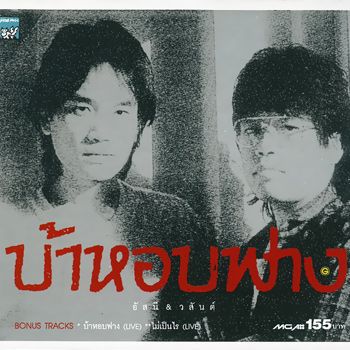
Abb.:
CD-Titel
|
"Asanee-Wasan (Thai: อัสนี-วสันต์, auch Asanee & Wasan Chotikul - อัสนี-วสันต์ โชติกุล) ist eine Rockband aus Thailand bestehend aus den Gebrüdern Asanee „Pom“ (อัสนี "ป้อม" โชติกุล) und Wasan „Toe“ Chotikul (วสันต์ "โต๊ะ " โชติกุล, 1957 - ). Unter den beiden Brüdern ist Asanee bekannt als der Rocker und für seine Gitarrensolos, während Wasan eher die sanftere Seite vertritt. GeschichteDie Chotikul-Brüder wurden in der Provinz Loei (เลย) geboren, Asanee am 9. April 1955 und Wasan am 25. März 1957. Um zu studieren, zogen beide nach Bangkok und begannen ihre Musikerlaufbahn in den 1970er Jahren mit einer Band namens Isn't (อีสซึ่น). Der Musikstil war Folk-Rock. 1974 nahmen Sie an einem Folksong Wettbewerb teil den sie gewannen. Anschließend brachten Sie mehrere Alben unter dem Namen Isn't heraus. So unter Anderem Sao ngam ta (Schönes Mädchen) und Siam Square. Da Asanee lieber rockigere Musik machen wollte, verließ er die Band. Er schloss sich zunächst der Oriental Funk Band Rewat Buddhinan (เรวัต พุทธินันทน์) an um später noch zur Band Butterfly zu wechseln. Beide Brüder kamen aber 1986 wieder zusammen um als „Asanee-Wasan“ (อัสนี-วสันต์) Ihr erstes Album Bah horb fang (บ้าหอบฟาง)heraus zu bringen. Anschließend unterschrieben Sie einen Vertrag bei GMM Grammy unter deren Label sie auch das nächste Album auf den Markt brachten. Puk-chee roy nah (ผักชีโรยหน้า) enthielt die ersten Hits des Duos: „Nung Mit Chid Klai“ (หนึ่งมิตรชิดใกล้ -Ein enger Freund) und „Kor Keui Sanya“ (ก็เคยสัญญา). 1989 vertonten Asanee-Wasan in einem Song den vollständigen zeremoniellen Namen von Bangkok (กรุงเทพมหานคร - Krung Thep Mahanakhon usw.) Viele Thailänder nutzen dessen Melodie als Merkhilfe, um sich den 43 Silben langen Namen ins Gedächtnis zu rufen. Neben der Arbeit mit seinem Bruder Wasan gründete Asanee Chotikul das Label More Music unter dem Dach der GMM Grammy. So entdeckte und produzierte er zum Beispiel Sek LOSO (เสก โลโซ, 1974 - ). Das 20-jährige Bestehen des Duos wurde mit einem „20th Anniversary Concert“ in der „Impact Arena“ in Mueang Thong Thani (อิมแพ็ค เมืองทองธานี) im Landkreis Pak Kret (ปากเกร็ด) in Nonthaburi (นนทบุรี) begangen. Ursprünglich war nur ein Konzert geplant, doch aufgrund der großen Nachfrage gaben sie noch zwei weitere Konzerte welche ebenfalls beide ausverkauft waren. Insgesamt spielten sie also vom 12.-14. Mai 2006 drei Konzerte hintereinander vor ausverkauftem Haus. Die Arena fasst dabei 12.000 Zuschauer. Weitere Konzerte gab es in Nakhon Ratchasima (Provinz) (นครราชสีมา) und Phuket (ภูเก็ต). Supporting Acts war jeweils Fahrenheit (ฟาเรนไฮต์). [1] Im Mai 2008 traten Asanee-Wasan zu einer kleinen Welttournee an, wobei sie in Sydney, Los Angeles, London und New York aufgetreten sind. [2] Im Jahr 2007 erschien das bisher letzte Album Pug Ron (พักร้อน) und Asanee-Wasan gaben ein Konzert im Rajamangala-Nationalstadion (สนามราชมังคลากีฬาสถาน) welches aufgezeichnet und als DVD herausgebracht wurde. Wasans Solo ProjekteAuf den Alben des Duos singt Wasan normalerweise nur ein bis zwei Lieder. Ein Hit der Brüder, Khong Derm, wurde beispielsweise von ihm gesungen. Ein anderer Hit, Nueng Mit Chit Klai (หนึ่งมิตรชิดใกล้), war eines seiner Arbeiten für die Band Isn't und wurde für Asanee-Wasan neu arrangiert und produziert. Auch während der Zeit mit seinem Bruder brachte Wasan zwei Alben heraus, Guitar Toe (กีตาร์โต๊ะ) mit Isn't im Jahr 1988 und als Solo Album Khuen Toe (ขึ้นโต๊ะ) im Jahr 1992." [Quelle: http://en.wikipedia.org/wiki/Asanee%E2%80%93Wasan. -- Zugriff am 2013-04-08] |
1986
Erste Nummer der Zeitschrift Sarakadee Magazine (สารคดี). -- ISSN 0857-1538.
Abb.: Heft 324 (2012)
1986
Es erscheint:
Saiyud Kerdphol [สายหยุด เกิดผล] <1922 - >: The struggle for Thailand : counter-insurgency, 1965-1985. -- Bangkok : S. Research Center Co., 1986. -- 253 S. : Ill. ; 20 cm
Abb.: Einbandtitel
"In CSOC’s [Communist Suppression Operations Command] first days, something had to be done for Na Kae District [นาแก] — and quickly. The communists had burned down the district and police headquarters buildings and Bangkok had been notified that the local authorities could not handle the matter.
Abb.: Lage von Na Kae [นาแก]
[Bildquelle: OpenStreetMap. -- Creative Commons Lizenz (Namensnennung, share alike)]We had a Regimental Combat Team at Udon Thani [อุดรธานี]. However, all we could give them was very general intelligence. We knew that the communists had concentrated in the Lup Ee Lert valley in the Na Kae mountains. It was not very much to go on, but we had to respond, whether our actions were successful or not.
We went into Lup Ee Lert and we could not find any communists, but from that first operation we learned a lot. Our intelligence discovered from local villagers that the insurgents were not really living in the valley’s jungle but in villages. They would use peaceful-seeming villages as their base areas and then fight far away, returning home at night.
In that operation, we also learned something about the people’s attitude towards the communists. They knew that the government did not approve of the terrorists and their teachings, but they were not convinced that Bangkok was serious about countering them. In some areas, the communists had even managed to convince the people that they, the insurgents, were carrying out Bangkok’s wishes. "The local authorities are brutal and corrupt," they would tell the villagers. "The central government has sent us to help you deal with them."
Occasionally, during those earty years, Thai officialdom made mistakes. Some people were impatient with CSOC. Our programmes depended on winning people over to our point of view and this often meant maintaining patience, sometimes with great difficulty. Especially when the communists were using extreme terrorist methods, there were military people who wondered why we should take so long. "Why not go in there, simply and quickly," they asked, "and use military force to crush the insurgents?"
In those days, area commands were in the hands of older soldiers who often did not understand what we wanted to do. I respect this older generation; they are my brothers. But the military alone could not do the job, and occasionally extreme punitive action only made matters worse. In one well-documented action at Ban Phon Ngam [บ้าน โพนงาม] in the Northeast in 1966, for example, women were raped, two men (one later found not to be a communist) were tortured, and an unknown number of villagers summarily executed. Younger officers were later to study this incident as an example of what not to do."
Abb.: Lage von Ban Phon Ngam [บ้าน โพนงาม]
[Bildquelle: OpenStreetMap. -- Creative Commons Lizenz (Namensnennung, share alike)]"CSOC was fortunate, too, in being able to demonstrate that our CPM [Civilian-Police-Military] policies were workable. In the Lerng Nok Tha District [เลิงนกทา] of Ubon Rachathani Province, the villagers were notoriously unfriendly towards the army. When the army first went there in 1966, the people ignored all soldiers. They would not even give bananas to the troops. If a soldier went to a latrine in the jungle at night, he was in danger of being shot."
[Bildquelle: OpenStreetMap. -- Creative Commons Lizenz (Namensnennung, share alike)][a.a.O., S. 13ff. -- Faire use]
1986

Es erscheint
Rosenberg, Klaus <1943 - 1988>: Sozialkritische Literatur in Thailand : Protest und Anklage in Romanen und Kurzgeschichten eines Landes der Dritten Welt. -- Hamburg : Ges. für Natur- u. Völkerkunde Ostasiens, 1986. -- 360 S. ; 21 cm. -- (Gesellschaft für Natur- und Völkerkunde Ostasiens: Mitteilungen der Gesellschaft für Natur- und Völkerkunde Ostasiens e.V. Hamburg ; Bd. 101). -- Eine Darstellung der "Literatur für das Leben" (วรรณกรรมเพื่อชีวิต)
Abb.: Einbandtitel
1986

Es erscheint
Donner, Eka <1922 - 2008>: Damals in Thailand : Notizen und Skizzen am Rande. -- Bonn : DTG, 1986. -- 105 S. : Ill. ; 21 cm. -- (Publikationen / Deutsch-Thailändische Gesellschaft ; 11). -- ISBN 3-923387-10-5
Abb.: Einbandtitel
"Sridaoruang [ศรีดาวเรือง = วรรณา สวัสดิ์ศ, 1943 - ] schildert in seiner [richtig: ihrer] nostalgischen und traurigen Geschichte von den "Lords of the Land" das Leben und die Probleme solcher Landgeister, Hüter und Bewahrer von Parzellen kleiner Leute und Helfer in vielen Schwierigkeiten des Lebens. Die einstigen Bewohner, ihre Betreuer, sind vertrieben worden und haben sie zurückgelassen auf dem vor sich hinrottenden Grundstück in ihren immer mehr verfallenden kleinen Schreinen. Die Leute hoffen wohl noch immer, zurückkehren zu können. Aber jetzt ist niemand mehr da, der den Geistern Opfer bringt, der die Weihrauchgefäße füllt und betet. Gegenüber den Millionären in der Stadt, gegenüber der Wohnungsbaugesellschaft haben sich die kleinen Geister als machtlos erwiesen. Sie konnten nicht verhindern, dass das Land verkauft wurde, dass anstelle der abgerissenen Hütten neue Häuser für wohlhabende Leute emporwuchsen und schließlich ein großes, unglaublich teures Geisterhaus hingesetzt wurde aus Zement und mit bunten Lichtern." [a.a.O. -- S. 32. -- Fair use]
"Thailänderinnen sind schön und begehrenswert, wir wissen es. Warum sonst reisen immer wieder ganze Flugzeugladungen voller Männer in jenes gelobte Land, streifen ihre Alltagshaut ab, vergessen, wer sie zu Hause sind. Wie mit magischer Kraft zieht es sie zu diesen gut angezogenen und so erregend kindhaften Erscheinungen, dieser schmiegsamen Anmut, dem gewinnenden Lächeln, den sanften Mandelaugen. Und sollen diese zärtlichen Engel nicht bei alledem auch noch ergebene Dienerinnen des Mannes sein, ihn umsorgen, verehren, bewundern? Welche Frau lässt so viel männliches Interesse wohl kalt? Die Bewunderung hebt ihr Selbstwertgefühl, erschließt neue Möglichkeiten für bisher weniger vom Glück Bedachte.
Nur leider ist man nicht allein. Da sind noch andere, auch sie schön. So gehen kritische Blicke hin und her, man vergleicht, wägt ab, lauscht den Einflüsterungen, den Lockungen und folgt schließlich der Einladung zum Wettbewerb. Spieglein, Spieglein an der Wand, wer ist die Schönste im ganzen Land?
Immer waren und sind sie zur Stelle, die "Sponsoren", die die "Misswahl", diese höchst reizvolle Möglichkeit, der Lösung einer brennenden Frage näherzukommen, finanzieren und organisieren. Natürlich nicht nur, um der Schönheit schlechthin zu dienen. Jeder hat eben seinen Vorteil dabei - die Mädchen, wie sie meinen, und die Sponsoren: Kosmetikfirmen, die Miss Feder kürten, Miss Schön oder Photogen und die die Siegerinnen gleich weiterschicken in das Rennen um Miss Thailand, Miss Asien, International, Welt oder Universum. Man legte sich da keine Beschränkungen auf.
Stadt- und Provinzverwaltungen auch, die dann gern ein allgemeines Fest zum Anlass nehmen, um Miss Songkran zu wählen oder Miss Loy Krathong [ลอยกระทง]. Auch der Name von Orten macht sich gut in diesem Zusammenhang: Miss Nongkhai [หนองคาย] oder Miss Bangkok. Die Stadt Lop Buri [ลพบุรี] schließlich kürte im Jahr 1986 die schönste Witwe und - nun auch gleiches Recht für die Männer - die beste männliche Glatze der Provinz.
Welch ein Anziehungspunkt für Touristen, solche Wahl einer Schönheitskönigin. Da wollten auch Hotels und Luftgesellschaften nicht zurückstehen und auch Schulen nicht. So kam es, dass sich einunddreißig Schönheiten, in hot pants, um den Titel einer "Miss Bangkok Christian College" bewarben.
Bedauerlicherweise gab es hin und wieder Proteste. Da ließen sich Männer hören, die ohne Misswahlen auszukommen glaubten, weil sie auch so wussten, wie schön die Frauen ihres Landes sind. Die sich empörten über die schamlosen Paraden auf dem Laufsteg, im Badeanzug, man denke!
Auch von anderer Seite kamen Einwände. War nicht die Lage zu ernst für derlei Unfug? Bedrohten nicht Terroristen in Süd und Nord den Frieden? Es kam zur Niederlegung eines Protestkranzes vor dem Wahllokal, weiße Blumen und ein Gedicht, das zur Vernunft mahnte. Der Kranz erregte Aufsehen, wurde aber entfernt von der Polizei. Die Menge zerstreute sich, die Wahlzeremonien gingen weiter.
Immerhin schloss sich die Regierung dem Protest an. Keine Schönheitswettbewerbe mehr durch offizielle Stellen. Keine Miss Thailand, während Soldaten verwundet wurden oder starben im Kampf gegen die kommunistischen Aufrührer. Die Diskussion breitete sich aus, Verbotsgegner fanden, dass gerade in einer Zeit wie dieser eine Miss Thailand die Stimmung heben, das Gefühl der Depression verscheuchen könnte. Die Wahl sei notwendiger denn je.
Doch immer findet sich ein Ausweg in diesem glücklichen Lande. Wo offiziellen Stellen die Hände gebunden sind, können private einspringen. Und diese verzichteten dann wohl auf die umstrittene Miss Thailand, dafür aber wählten sie Miss Chiang Mai, Miss Nordthailand und Miss Siam. Was auch wäre sonst geworden aus dem großen Winterfest im Norden, zu dem all die Touristen nicht zuletzt wegen der schönen Mädchen kamen? Man geht eben nicht mit dem Kopf durch die Wand, man macht einen eleganten Bogen um das Hindernis und hat dann wieder freie Bahn vor sich. Beneidenswert!
Ein Zeitvertreib, der Farbe und Schwung ins Leben bringt, dieser Wettstreit der Schönsten. Möglicherweise der Beginn einer Karriere. Als Modell vielleicht oder als Public Relations Girl bei großen Messen, im nationalen Pavillon einer Weltausstellung gar. Auch als Ansagerin in Rundfunk oder Fernsehen, von denen manche einst die Glitzerkrone trug.
Doch es bleibt nicht beim "Sanuk" [สนุก]. Ein Schönheitswettbewerb ist, wie der Kölner Karneval, eine tiefernste Sache. Sollte man sich da nur auf das Training verlassen, das die Teilnehmerinnen monatelang vorher beschäftigt? Nein, auch höhere Mächte müssen eingeschaltet werden. Ganz besonders, wenn man sich auf fremden Boden wagt, wenn es gilt, die Schönheit im Dienste seines Landes gegen die ganze Welt zu verteidigen.
Ein Opfer für den Smaragd-Buddha vor der Reise, sein Bildnis im Haarknoten versteckt bei der Wahl, vielleicht auch noch eine magische Formel, während das Make-up aufgetragen wird. Es gibt da manche Möglichkeiten. Werden solche Bitten um Beistand doch als völlig natürlich betrachtet, auch wenn sie sich auf Erfolg im Geschäft, Gehaltserhöhung oder ein gutes Examen beziehen.
Aber bis zuletzt doch diese Spannung, die das Herz wild schlagen läßt, diese Unsicherheit, ob es klappen wird. Wenigstens ein zweiter, dritter oder vierter Platz. Und wenn nicht? Wie soll man dann seinen vielen Fans gegenübertreten, diesen jungen, im Gastlande studierenden Thais, die alle gekommen sind, die sich ihrerseits bemühen, die ein Bild des Buddha hinter die Bühne schmuggeln, opfern und beten.
Schwere Stunden sind das. Da steht man im Rampenlicht, präsentiert sich mit strahlendem Lächeln und wünscht insgeheim den Konkurrentinnen eine Warze an sichtbarer Stelle oder ein Schielauge, das sich auf mehrere Jury-Mitglieder zugleich heftet. Doch der Einsatz lohnt. Gegen die überirdischen Kräfte sind die Herren da unten machtlos, Miss Thailand siegt.
Und später, nach dem begeisterten Empfang in der Heimat, der Dank an den Buddha. Eier, Reis, nam prik [น้ำพริก], die Makrelensauce, Jasmingirlanden. Nicht genug damit. Auch noch ein paar Goldplättchen an heiliger Stelle aufkleben, ein paar gefangenen Vögeln die Freiheit wiedergeben, dem Ortsgeist der Schule in seinem Miniaturtempel die gebührende Reverenz erweisen und auch dem Beschützer der Stadt. All das sind gute Taten, unerlässlich und selbstverständlich. Man hat gebeten, man wurde erhört, und nun dankt man, und alle, alle freuen sich mit einem."
[a.a.O., S. 40ff. -- Fair use]
"Der Polizeikommandeur der Provinz Phatthalung [พัทลุง)] stand übrigens, wie wir aus der Zeitung erfuhren, vor einem Problem. Viele seiner Polizisten, deren Dienst ja nicht ungefährlich war, hatten bis zu drei Nebenfrauen. Wem sollte man die Witwenpension bezahlen, wenn der Beamte umgebracht wurde? Der Kommandeur ließ sich also von den mehr als hundert Männern eine Liste ihrer Frauen geben: Hauptfrau, Nebenfrauen und Kinder. Dann wurde entschieden, daß in erster Linie die Hauptfrau eine Pension bekommen sollte und dann die, bei denen Kinder des Verblichenen lebten. Eine fatale Situation , denn wie konnte der Polizist noch den Nebenfrauen unter die Augen treten, wenn sie erfuhren, dass er sie nicht als Hauptfrau eingestuft hatte? Das war wirklich schlimmer als die Terroristen!"
Abb.: Lage der Provinz Phatthalung [พัทลุง)]
[Bildquelle: CIA. -- Public domain][a.a.O., S. 101. -- Fair use]
1986
Gründung des Isan Arts and Culture Center (
สถาบันวิจัยศิลปะและวัฒนธรรมอีสาน) am Rajbhat Institute (สถาบันราชภัฏ, Lehrerbildungsanstalt) in Maha Sarakham (มหาสารคาม). Das Center hat 1999 25 Personalstellen. Zum Center gehört auch das Palm Leaf Inscription Center.
Abb.: Lage von Maha Sarakham (มหาสารคาม)
[Bildquelle: OpenStreetMap. -- Creative Commons Lizenz (Namensnennung, share alike)]
1986
Eröffnung des "Robot Building" in Bangkok. Architekt: Sumet Jumsai Na Ayudhaya (สุเมธ ชุมสาย ณ อยุธยา, 1939 - )
Abb.: Lage des Robot Building
[Bildquelle: OpenStreetMap. -- Creative Commons Lizenz (Namensnennung, share alike)]
Abb.: "Robot Building", Bangkok, 2002
[Bildquelle: Oran Viriyincy. -- http://www.flickr.com/photos/viriyincy/2902963193/. -- Zugriff am 2011-12-09. -- Creative Commons Lizenz (Namensnennung, share alike)]
Abb.: Sumet Jumsai Na Ayudhaya (สุเมธ ชุมสาย ณ อยุธยา)
[Bildquelle: 2T (upload for User:Looknarm) / Wikipedia. -- GNU FDLicense]
"The Robot Building, located in the Sathorn (สาทร) business district of Bangkok, Thailand, houses United Overseas Bank's Bangkok headquarters. It was designed for the Bank of Asia by Sumet Jumsai (สุเมธ ชุมสาย ณ อยุธยา, 1939 - ) to reflect the computerization of banking; its architecture is a reaction against neoclassical and high-tech postmodern architecture. The building's features, such as progressively receding walls, antennas, and eyes, contribute to its robotic appearance and to its practical function. Completed in 1986, the building is one of the last examples of modern architecture in Bangkok. Design
Thai architect Sumet Jumsai designed the Robot Building for the Bank of Asia, which was acquired by United Overseas Bank in 2005.[2][3] He had been asked by the Bank of Asia's directors to design a building that reflected the modernization and computerization of banking[2][4] and found inspiration in his son's toy robot.[5]
Sumet designed the building in conscious opposition to postmodern styles of the era, particularly classical revivalism and high-tech architecture as embodied in the Centre Pompidou.[6] While Sumet praised the inception of postmodernism as a protest against puritanical, bland modern design, he called it "a protest movement which seeks to replace without offering a replacement".[7] Sumet dismissed mid-1980s classical revivalism as "intellectual[ly] bankrupt[]" and criticized the "catalogue[s] of meaningless architectural motifs" that characterized classical revivalism in Bangkok.[7] He further dismissed high-tech architecture, "which engrosses itself in the machine while at the same time secretly...lov[ing]...handmade artifacts and honest manual labor", as a movement without a future.[8]
Sumet wrote that his building "need not be a robot" and that a "host of other metamorphoses" would suffice, so long as they could "free the spirit from the present intellectual impasse and propel it forward into the next century".[7] He wrote that his design might be considered post-high-tech: rather than exhibiting the building's inner workings, he chose to adorn a finished product with the abstractions of mechanical parts.[9] His building, he argued, struck against the 20th century vision of the machine as a "separate entity" often "elevated on a pedestal for worship" and, by becoming "a part of our daily lives, a friend, ourselves", cleared the way for the 21st century amalgam of machine and man.[8]
The building was completed in 1986 at a cost of US$10 million.[1][2] By the mid-1980s, architectural modernism had faded in Bangkok; this building is one of the last examples of the style.[10]
CharacteristicsThe building is 20 stories tall and has a total floor area of 23,506 m² (253,016 ft²).[2][3] The floor areas decrease progressively at the 4th, 8th, 12th, 16th, and 18th floors; the staggered shape both contributes to the robot's appearance and is an efficient solution to setback regulations requiring an 18 degree incline from each side of the property line.[11] The building's ground floor is a double-height banking hall.[12] The hall's interior architecture, designed in association with the firm 7 Associates, was designed to further the robotic appearance of the building; four sculptures by Thai artist Thaveechai Nitiprabha stand at the main door.[9] Mezzanine floors located on each side of the banking hall contain offices and meeting rooms.[12] The building's second floor features a large multipurpose hall, offices, and training rooms, and its upper floors contain general office space.[12] An eight-story parking garage is located behind the main building.[2]
The building's decorative exterior contributes its building's robotic appearance, though it often serves practical functions as well.[13] Two antennas on the building's roof are used for communications and as lightning rods.[12] On the building's upper facade, in front of the main meeting and dining rooms of the top executive suites, are two 6 m (19.7 ft) lidded eyeballs that serve as windows.[9] The eyeballs are made of reflective glass; the lids are made of metallic louvers.[9] Nuts made of glass-reinforced concrete adorn the building's sides; the building's largest nuts measure 3.8 m (12.5 ft) in diameter and were the largest in the world at the time of their construction.[9] The building's east and west walls (the robot's sides) have few apertures to shield its interior from the sun and to increase energy efficiency, and its north and south sides (the robot's front and back) are tinted curtain walls whose bright blue color was chosen because it was the symbol of the Bank of Asia.[2]
RecognitionThe Robot Building was selected by the Museum of Contemporary Art, Los Angeles as one of the 50 seminal buildings of the century.[14] The building also earned Sumet an award from Chicago's Athenaeum Museum of Architecture and Design, the first such award given to a Thai designer.[15] According to Stephen Sennott's Encyclopedia of 20th Century Architecture, the building "enhanced the world's recognition of modern Thai architecture".[16]
References NotesWorks cited
- Kusno, p. 197.
- Sumet, p. 74.
- Williams, Nick B. "Third World Review: High rise battle of Bangkok - The 20-storey robot that is the focus of architectural acrimony." The Guardian (May 22, 1987).
- "Buildings that put a sparkle in Thai skyline." The Straits Times (April 4, 1997).
- Algie, Jim. "Building A Name in Paris: The French capital plays host to an exhibition by Thailand's Renaissance Man." Asia Week (December 17, 1999).
- Sumet, p. 79–80.
- Sumet, p. 79
- Sumet, p. 80.
- Sumet, p. 77.
- Williams & Cummings, p. 28.
- Sumet, pp. 74, 76.
- Sumet, p. 76.
- Sumet, p. 74, 76–77.
- "Sumet Jumsai." ArchNet digital library at archnet.com. Accessed November 13, 2007.
- "Corporate Focus: Propaganda coup in decor market; Inventions: Original designs intended to make people ask 'What is this?'" Bangkok Post (August 6, 2001).
- Sennott, p. 106.
[Quelle: http://en.wikipedia.org/wiki/Robot_Building. -- Zugriff am 2011-12-09]
- Kusno, Abidin. Behind the Postcolonial: Architecture, Urban Space and Political Cultures in Indonesia. Routledge (2000). ISBN 0415236150.
- Sennott, Stephen (editor). Encyclopedia of 20th Century Architecture. Taylor & Francis (2004). ISBN 9781579584337.
- Sumet Jumsai. "Building Study: Bank of Asia, Bangkok." Mimar: Architecture in Development 23 (1987): 74–81. Singapore: Concept Media Ltd.
- Williams, China and Joe Cummings. Bangkok. Lonely Planet (2004). ISBN 1740594606."
1986
Gründung des privaten Rangsit College (seit 1990: Rangsit University, มหาวิทยาลัยรังสิต).
Abb.: ®Logo
[Bildquelle: Wikipedia]
Abb.: Lage der Rangsit University (มหาวิทยาลัยรังสิต)
[Bildquelle: OpenStreetMap. -- Creative Commons Lizenz (Namensnennung, share alike)]
Abb.: Rangsit University (มหาวิทยาลัยรังสิต), 2007
[Bildquelle: ibroodnow. -- http://www.flickr.com/photos/ibroodnow/845636253/. -- Zugriff am 2012-02-02. -- Creative Commons Lizenz (Namensnennung, keine kommerzielle Nutzung, keine Bearbeitung)]
"Rangsit University (Thai: มหาวิทยาลัยรังสิต) is a private institution of higher education with the primary aim of creating graduates in the area of study meeting the requirements of national development by focusing mainly on science , technology, design and management including independent professions which are requisites in development of one’s own career. Faculties and College
Currently there are total of 120 programs; 82 undergraduate programs for, 31 Master Degree programs and 7 Doctoral Degree programs."
[Quelle: http://en.wikipedia.org/wiki/Rangsit_University. -- Zugriff am 2012-02-02]
1986
Inserate:
1986
Briefmarken:
1986 - 1990

Wolfgang Seyfarth (1937 - ) ist der letzte Botschafter der DDR für Thailand. Er residiert in Kuala Lumpur (Malaysia)
"Wolfgang Seyfarth (* 10. Januar 1937) ist ein ehemaliger deutscher Diplomat. Er war Botschafter der DDR in mehreren afrikanischen und südostasiatischen Staaten. Leben
Seyfarth schloss die Oberschule mit dem Abitur ab. Er studierte von 1955 bis 1959 mit dem Abschluss als Diplomstaatswissenschaftler an der Deutschen Akademie für Staats- und Rechtswissenschaft und trat 1959 in den Diplomatischen Dienst der DDR ein.
Seyfarth war zunächst außerplanmäßiger Attaché in der Ersten Außereuropäischen Abteilung (Ferner Osten) im Ministerium für Auswärtige Angelegenheiten der DDR (MfAA) bzw. an der Botschaft der DDR in Peking. Von 1961 bis 1963 war er Mitarbeiter der Vierten Außereuropäischen Abteilung (Afrika) des MfAA. 1963/1964 wirkte er als Gehilfe des Handelsrats an der Wirtschafts- und Handelsmission in der ghanaischen Hauptstadt Accra. Von 1966 bis 1969 war er persönlicher Referent eines der stellvertretenden Außenminister. Von 1969 bis 1971 fungierte er als Zweiter Sekretär am Generalkonsulat der DDR in Ägypten, anschließend von 1971 bis 1973 als Konsul am Generalkonsulat in Tansania. Von 1974 bis 1976 absolvierte er ein postgraduales Studium an der Diplomatenakademie in Moskau. Von 1976 bis 1980 war er Botschafter der DDR in Lagos und von 1977 bis 1980 zweitakkreditiert in Benin und in Äquatorialguinea. Von 1980 bis 1986 leitete er das Sekretariat der Kommission Entwicklungsländer bei der Staatlichen Plankommission. Von 1986 bis 1990 war er Botschafter der DDR in Kuala Lumpur sowie zweitakkreditiert in Thailand und in Burma.
Seyfarth war Mitglied der SED."
[Quelle: http://de.wikipedia.org/wiki/Wolfgang_Seyfarth_%28Diplomat%29. -- Zugriff am 2014-11-25]
1986 - 1987

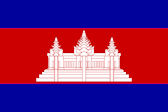
Die USA unterstützen die nichtkommunistischen Guerillas in Kambodscha mit 3,35 Mio. US$. Die Hilfe wird von Thailand weitergeleitet.
1986-01

Far Eastern Ecobnomic Review: A right royal example : King Bhumibol acts as a catalyt for progress / von Derek Davies. Darin wird der König so zitiert:
"A recurrent trouble with all aid programmes is the danger that they will create an attitude of dependency-do not give people fish, as the saying goes: better give them a rod and line, and teach them how to fish. Were his efforts appreciated? Were the villages grateful? "No one really appreciates," he said, "they always want more. That is why they must be encouraged to make themselves self-supporting, to stand on their own feet. That is why it is important not to give too much and even more important not to promise too much. If your attempts are too ambitious, only one thing has to go wrong or be delayed and a whole programme is affected. And that causes disappointment. You must give the minimum. The minimum amount." What is the minimum? "The minimum includes water to drink and water to irrigate the fields. These basics are lacked by the villagers, and that is why we must give them."
Why is it necessary for the king to involve himself so personally? "In any programme, many government departments must be involved. In building a dam, an irrigation scheme, for example, there is a part to be played by the officials of the Accelerated Rural Development Programme, the Ministry of Agriculture, other Bangkok ministries, the provincial authorities, the military-all must work together."
Is the king therefore using the throne’s prestige to override inter-departmental rivalries and frictions? Is he bringing together all those involved, banging heads to ensure action? "Yes, that is what I do. I can act as a catalyst.""
[Fair use]
1986-01-09
Feierliche Eröffnung des Khao Laem (เขาแหลม) Damms (heute: Vajiralongkorn Damm) in Amphoe Thong Pha Phum (ทองผาภูมิ), Provinz Kanchanaburi (กาญจนบุรี).
Abb.: Lage des Khao Laem (เขาแหลม) Damms
[Bildquelle: OpenStreetMap. -- Creative Commons Lizenz (Namensnennung, share alike)]
Abb.: Khao Laem (เขาแหลม) Damm
[Bildquelle: BrianAdler / Wikipedia. -- Public domain]
"Vajiralongkorn Dam, formerly named the Khao Laem Dam, is a concrete-face rock-fill dam (CFRD) in Thong Pha Phum (ทองผาภูมิ) district in Kanchanaburi (กาญจนบุรี), Thailand. The dam lies across the Khwae Noi River (แควน้อย, River Kwai) and was renamed Vajiralongkorn Dam after Crown Prince Maha Vajiralongkorn (สมเด็จพระบรมโอรสาธิราช เจ้าฟ้ามหาวชิราลงกรณฯ สยามมกุฎราชกุมาร) on July 13, 2001. Vajiralongkorn Dam is Thailand's first CFRD and supplies a 300 MW hydroelectric power station with water.[2] Construction
Dam construction began in 1979 and took five years to complete. Its reservoir started filling with water in June, 1984. Three 100MW hydropower generators came on line in October and December, 1984 and February 1985 respectively. The reservoir created by the dam has a maximum storage capacity of 8,860 million cubic meters covering a total catchment area of 3,720 square kilometres. Average runoff into the reservoir is approximately 5,500 million cubic meters per year."
[Quelle: http://en.wikipedia.org/wiki/Khao_Laem_Dam. -- Zugriff am 2011-12-09]
1986-01-22

China unterzeichnet einen Kaufvertrag über Reis und Mais im Wert von 1,37 Milliarden Baht. Damit hilft China Thailand in der wirtschaftlichen Depression. Monatlich werden 500.000 Tonnen geliefert.
1986-02
"In February 1986, I visited Chantawipa Apisuk [จุมพล อภิสุข], founder of Empower [Education Means Protection Of Women Engaged in Recreation, มูลนิธิส่งเสริมโอกาสผู้หญิง], whose office is located near Patpong Street [พัฒน์พงษ์]. She studied sociology at Thammasat University [มหาวิทยาลัยธรรมศาสตร์] and then continued her studies in the United States. There she participated in the protests against the Vietnam War and later, in the women’s liberation movement. On her return to Thailand in 1982, she decided to devote herself to issues of concern to Thai women. In 1985, through her associations with Patpong women, she established Empower, which aims to support women’s efforts to become self-reliant, and help them realize alternative employment. Chantawipa explained why Empower started its ‘Four P. M. ’ English class: If a woman can speak English she can avoid being cheated by foreign customers, and she will have more opportunity to promote herself from gogo dancer to waitress, which is a steady job with a fixed regular salary. In this way these girls may have better chances to learn skills and escape their dependence on the sex industry.... I want to be a friend rather than a teacher. Patpong girls want to be treated as human beings more than anything else.
Ranging in age from seventeen to twenty-six, over one hundred women now attend this English class. Some are married, some are unmarried mothers; all work at Patpong in the sex industry.
‘I want them to recover their self-respect by their own power; to try and improve their working conditions, and find a new life in the future, ’
Chantawipa said.
Recently, Empower began to publish Patpong Newsletter, and the Bangkok Post reported, ‘Bar-girls publish their own newspaper. ’ More and more, these women have been able to transform themselves from passive victims of sexual exploitation into women who resist it. I was really impressed by Chantawipa’s long and continuous efforts to help these women become strong and more self-reliant.
Sold as girls from the farming villages to Bangkok’s sex industry, they start working at the teahouses in Chinatown - the lowest brothels at the bottom. Some of them move up to Patpong, gaining some freedom, independence and income along the way and, if they are lucky, they might even migrate overseas. In 1984, one of the women in Empower’s English class went from Patpong to a legitimate job in Japan."
[Quelle: Yayori Matsui [松井やより]: Women's Asia. -- London : Zed, 1989. -- 172 S. : Ill. ; 22 cm. -- ISBN 0862328276. -- Originaltitel: アジアの女たち (1987). -- S. 66f. -- Fair use]
1986-02-13

Gemeinsame Offensive mit Malaysia gegen Stützpunkte der Comunist Party of Malaya (CPM). In Betong (เบตง), Provinz Yala (ยะลา) werden sechs thailändische Soldaten aus einem Hinterhalt heraus angegriffen. Daraufhin Helikopter-Gegen-Offensive.
Abb.: Lage von Betong (เบตง)
[Bildquelle: OpenStreetMap. -- Creative Commons Lizenz (Namensnennung, share alike)]
1986-02-24
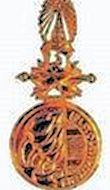
Zu National Artists (ศิลปินแห่งชาติ) werden ernannt:
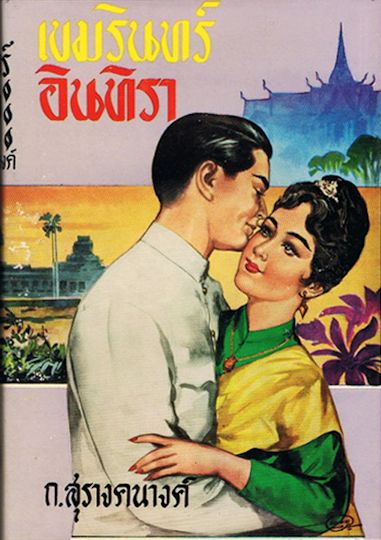
Abb.: Einbandtitel eines Buchs von Kanha Kiengsiri (นางกัณหา เคียงศิริ
= ก.สุรางคนางค์)
[Fair
use]
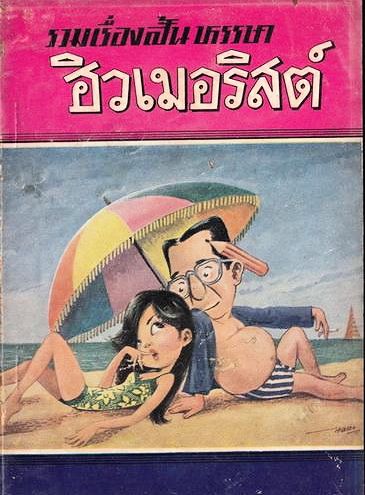
Abb.: Einbandtitel eines Buchs von Ob Chaiyavasu (นายอบ ไชยวสุ
= ฮิวเมอริสต์)
[Fair use]
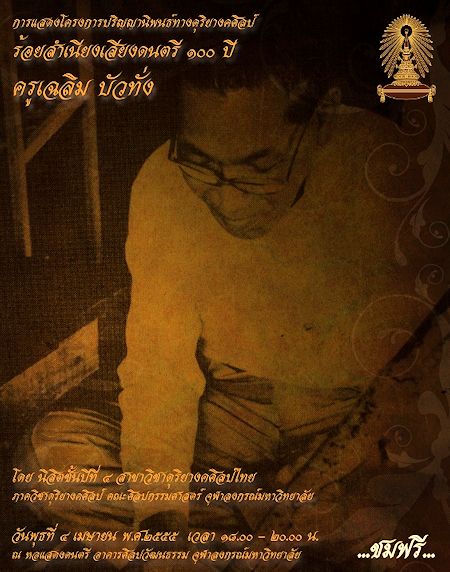
Abb.: Plakat zum 100. Geburtstag von Chalerm Buatang (นายเฉลิม บัวทั่ง),
2012
[Fair use]
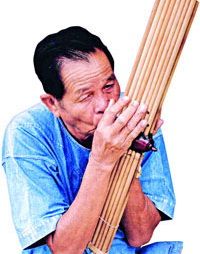
Abb.: Plueng Chairasami (นายเปลื้อง ฉายรัศมี)
[Bildquelle: Phonpalakorn / th.Wikipedia]
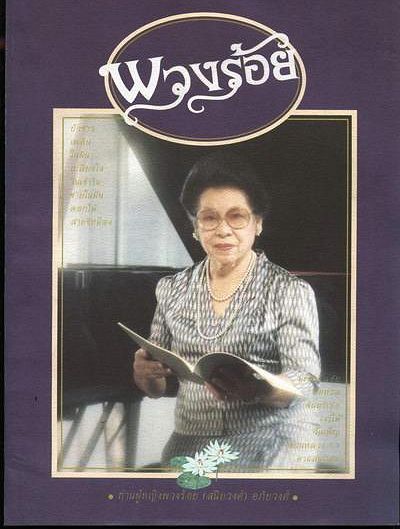
Abb.: Einbandtitel eines Buchs über Puangroi Abhaiwongsa
(ท่านผู้หญิงพวงร้อย อภัยวงศ์)
[Fair use]
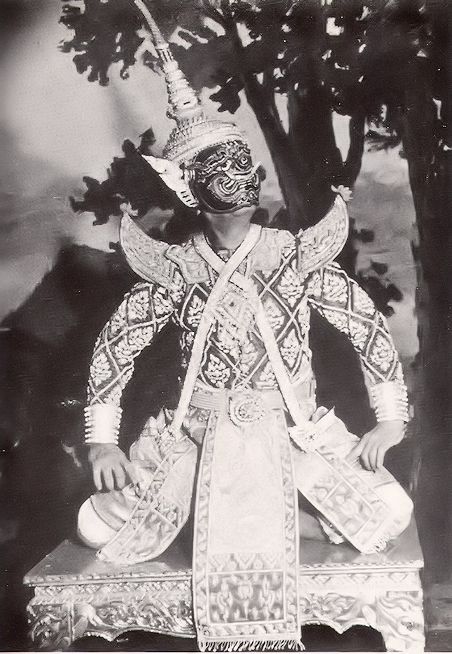
Abb.: Rongpakdee Jarujarana (นายรงภักดี
- เจียร - จารุจรณ)
[Bildquelle: th.Wikipedia. -- Fair use]
1986-02-25

In einem unblutigen Volksaufstand wird der philippinische Präsident Ferdinand E. Marcos (1917 - 1989) gestürzt. Er geht ins Exil nach Hawaii.
1986-03
Große Trockenheit in Nordostthailand. In Khon Kaen (ขอนแก่น) sind 76% des Ackerlands ausgedorrt.
Abb.: Lage von Khon Kaen (ขอนแก่น)
[Bildquelle: CIA. -- Public domain]
1986-03 - 1989 -02

Der US Biologe Alan Rabinowitz (1953 - ) studiert die Wildtiere im Huai Kha Khaeng Wildlife Sanctuary (เขตรักษาพันธุ์สัตว์ป่าห้วยขาแข้ง).
Abb.: Lage des Huai Kha Khaeng Wildlife Sanctuary (เขตรักษาพันธุ์สัตว์ป่าห้วยขาแข้ง)
[Bildquelle: OpenStreetMap. -- Creative Commons Lizenz (Namensnennung, share alike)]Sein Erlebnisbericht erscheint 1991:
Rabinowitz, Alan <1953 - >: Chasing the dragon's tail : the struggle to save Thailand's wild cats. -- With a new afterword by the author. --New York : Doubleday, ©1991. -- Washington : Island Press/Shearwater Books, 2002. -- 247 S. : Ill. ; 23 cm. -- ISBN: 978-1-55963-980-4. -- Originally published: New York : Doubleday, 1991
Abb.: Einbandtitel der Ausgabe 1991
"Alan Robert Rabinowitz (born December 31, 1953), an American zoologist, is the CEO of Panthera, a nonprofit conservation organization devoted to protecting the world's 37 wild cat species.[2] Called the "Indiana Jones of Wildlife Protection" by Time, he has studied jaguars, clouded leopards, Asiatic leopards, tigers, Sumatran rhinos, bears, leopard cats, raccoons, and civets. Early life
Rabinowitz was born to Frank and Shirley Rabinowitz in Brooklyn, New York but moved to Queens, New York soon after.[4] In grade school, he was placed in a special education class due to a severe stutter.[5] Unable to communicate with his peers and teachers, Rabinowitz became interested in wildlife, to which he could communicate.[6]
Today, Rabinowitz frequently tells this childhood story in interviews, lectures, books and other publications to explain how he became interested in wildlife conservation.[7][8] In 2008, the video of Rabinowitz telling this story on The Colbert Report went viral.[9] He serves as a spokesperson for the Stuttering Foundation (SFA).[10]
In 1974, Rabinowitz received his bachelor's degree in biology and chemistry from Western Maryland College (now McDaniel College) in Westminster, Maryland. He then received his M.S.(1978) and Ph.D. (1981) in ecology from the University of Tennessee.
CareerPrior to co-founding Panthera with the organization's Chairman, Thomas Kaplan (1962 - ), in 2006, he served as the Executive Director of the Science and Exploration Division for the Wildlife Conservation Society, where he worked for nearly 30 years.
While working in Myanmar's Hukaung Valley (ဟူးကောင်းချိုင့်ဝှမ်း) in 1997, he discovered four new species of mammals, including the most primitive deer species in the world, Muntiacus putaoensis, or the leaf deer.[11] His work in Myanmar led to the creation of five new protected wildlife areas, including the country's first marine park, Lampi Island National Park (လန်ပိကျွန်း အဏ္ဏဝါအမျိုးသားဥယျာဉ်); Myanmar's first and largest Himalayan national park, Hkakabo Razi National Park (ခါကာဘိုရာဇီ); the country's largest wildlife sanctuary, Hukaung Valley Wildlife Sanctuary; the world's largest tiger reserve and one of the largest protected areas in the world, Hukaung Valley Tiger Reserve (ဟူကောင်း ကျား ထိန်းသိမ်းရေး နယ်မြေ), and Hponkhan Razi National Park, an area which connects Hukaung Valley and Hkakabo Razi for a contiguous protected area of more than 5,000 square miles, called the Northern Forest Complex.[12]
Rabinowitz also established the world's first jaguar sanctuary[6] — the Cockscomb Basin Jaguar Preserve— in Belize and the Tawu Mountain Nature Reserve (大武山自然保護區), Taiwan's largest protected area and last piece of intact lowland forest.[13] In Thailand, he conducted the first field research on Indochinese tigers, Indochinese leopards, and Asian leopard cats, leading to the designation of the Huai Kha Khaeng Wildlife Sanctuary as a UNESCO world biosphere reserve.[14]
One of his achievements was the conceptualization and implementation of the Jaguar Corridor,[15] a series of biological and genetic corridors for jaguars across their entire range from Mexico to Argentina. Rabinowitz also initiated Panthera's Tiger Corridor Initiative, an effort to identify and protect the world's last remaining large interconnected tiger landscapes, with a primary focus on the remote and rugged Indo-Himalayan region of Asia.[16]
His project to establish a chain of protected tiger habitat across the southern Himalaya was the focus of the BBC Natural History Unit's 2010 documentary series Lost Land of the Tiger. An expedition team spent a month investigating the status of big cats in Bhutan, leading to the discovery of tigers living at much higher altitudes than previously realized.[17]
Today, Rabinowitz serves as the CEO of Panthera, where he oversees the organization's range-wide conservation programs focused on tigers, lions, jaguars, and snow leopards and additional projects devoted to the protection of cougars, cheetahs, and leopards."
[Quelle: https://en.wikipedia.org/wiki/Alan_Rabinowitz. -- Zugriff am 2016-12-16]
1986-03-11

Der US-Erfinder Chuck Hull (1939 - ) erhält das Patent für Stereolithographie. Dies ist der beginn des dreidimensionalen Druckens. Dieses wird im 21. Jahrhundert weit verbreitet.
Abb.: Ausstellungsplakat, Bangkok 2013
[Fair use]
1986-03-15
Tod des Schriftstellers und Marxisten Supha Sirimanond (สุภา ศิริมานนท์, 1914 - 1986), ehemals Herausgeber und Redakteur der linksliberalen Zeitschrift Aksonsarn (อักษรสาส์น). Supha hinterlässt die größte Privatsammlung englischsprachiger marxistischer Literatur in Thailand, sie wird der Wirtschaftswissenschaftlichen Fakultät der Chulalongkorn University (จุฬาลงกรณ์มหาวิทยาลัย) überlassen.
Abb.: Supha Sirimanond (สุภา ศิริมานนท์ mit seiner gattin Chinda Sirimanond (จินดา ศิริมานนท์, 1917 - 2013)
[Bildquelle: th.Wikipedia. -- Public domain]
1986-04
Das Schnüffeln von Lösungsmitteln wird ein ernsthaftes Problem unter Jugendlichen Bangkoks.
"Als Schnüffeln wird die missbräuchliche Verwendung flüchtiger industrieller Lösungsmittel unterschiedlicher chemischer Struktur bezeichnet. Bei diesen „Schnüffelstoffen“ handelt es sich hauptsächlich um Benzin, Aceton, Toluol, Trichlorethylen und Fluorkohlenwasserstoffe. In der ICD-10 werden die daraus entstehenden Störungen unter F.18 zusammengefasst." [Quelle: http://de.wikipedia.org/wiki/Schn%C3%BCffeln_%28Drogenkonsum%29. --
1986-04
Mit der Eröffnung der sechsten Filiale wird Pizza Hut (พิซซ่าฮัท) zur größten Restaurantkette Thailands.
[Bildquelle: Joshua Willis. -- http://www.flickr.com/photos/joshuawillis/1298987366/. -- Zugriff am 2011-12-09. -- Creative Commons Lizenz (Namensnennung, keine kommerzielle Nutzung, keine Bearbeitung)]
1986-04

Der niedere Preis von US-Reis ($230 pro Tonne) bedroht Thailands Reisexport.
1986-04-27

In den Dschungeln des Grenzgebiets Thailands und Malaysias leben noch ca. 2000 kommunistische Terroristen. Davon gehören 13000 zur Communist Party of Malaya (马来亚共产党 / Parti Komunis Malaya, CPM) unter Chin Peng (陳平, 1924 - 2013), 700 gehören zur Communist Party of Malaysia, einer Splittergruppe der CPM.
Abb.: Chin Peng (陳平), 1952-05-01
[Bildquelle: Wikipedia. -- Public domain]Malaysia lässt 43 frühere kommunistische Terroristen frei, die zwischen 1981 und 1983 gefangen gesetzt worden und Umerziehungsmaßnahmen durchgemacht haben. Unter den Freigelassenen sind zwei Thais, sie bekommen unbefristetes Niederlassungsrecht in Malaysia.
1986-04-24
Gründung von Advanced Info Service (AIS).
Abb.: ®Logo
"Advanced Info Service Public Company Limited (AIS) ist mit fast 29 Millionen Kunden[1] der größte Mobilfunkanbieter in Thailand. AIS wurde am 24. April 1986 von Thaksin Shinawatra (ทักษิณ ชินวัตร, 1949 - ) als Leasing-Unternehmen für Computer gegründet. Im Oktober 1990 führte die Gesellschaft den 900-MHz-Mobilfunkdienst ein, den es für 20 Jahre als Monopol-Konzession von der Telephone Organization of Thailand (TOT) erhalten hatte. Im Juni 1992 kaufte man die Firma Shinawatra Paging, nachdem man seit 1991 im SET Index an der thailändischen Börse gelistet ist[2] (SET: ADVANC).
AIS gehört zur Shin Corporation und wird seit dem Frühjahr 2006 von der Firma Temasek Holdings aus Singapur geführt, wobei Singapore Communications einen Anteil von 19,5 % hält."
[Quelle: http://de.wikipedia.org/wiki/Advanced_Info_Service. -- Zugriff am 2012-06-07]
1986-04-26

Reaktorkatastrophe in Tschernobyl (Чорно́бильська АЕС, Ukraine, Sowjetunion).
Abb.: Radioaktive Verseuchung in der Umgebung von Tschernobyl 1996 (!)
[Bildquelel: CIA. -- Public domain]
1986-05-01
Nach einer Abstimmungsniederlage der Regierung im Parlament über die Erhöhung der Zulassungsgebühren für Kraftfahrzeuge löst der König das Parlament auf. Am 27. Juli sind Neuwahlen angesetzt.
1986-05-03
Ustaz Sha-roning (aka. Seni Madakakul) - Mitglied des Islamic Council of Pattani - gründet die al-Wahdah Party of Thailand
"The Al-Wahdah has played a pivotal role in protecting Muslim interests in the southern provinces since the mid-1980s. It was founded by Malay-Muslim politicians and religious leaders from Pattani [ปัตตานี], Yala [ยะลา], Narathiwat [นราธิวาส] and Satun [สตูล] at a conference in Majlis Agama Islam Patani (the Islamic Council of Pattani) on May 3, 1986 (Al-Wahdah News 1994: 128), headed by Ustaz Sha-roning or Seni Madakakul, a former Member of Parliament from Narathiwat. Den Tohmeena [เด่น โต๊ะมีนา, 1934 - ] (from Pattani province) and Wan Mohammad Nor Matha [วันมูหะมัดนอร์ มะทา, 1944 - ] (from Yala province) also contributed to the establishment of Al-Wahdah. Al-Wahdah sought to achieve its objectives through working within the Thai system. Hence its main strategy was to secure ministerial positions in order to obtain power for the overall improvement of Muslim society. Leaders of Al-Wahdah contested as candidates for the elections in their attempt to be Members of Parliament or Cabinet Ministers. And politically, the Al-Wahdah leaders aligned themselves with the New Aspiration Party [พรรคความหวังใหม่], headed by Chavalit Yongchaiyut [ชวลิต ยงใจยุทธ, 1932 - ] who shared the vision of improving and developing the south in a concerted effort to bring peace to the region.
During the 1992 elections, members of Al-Wahdah won six parliamentary seats and two candidates were appointed ministers in the cabinet. They were Den Tohmeena who was appointed the Interior Deputy Minister and Wan Mohammad Nor Matha, who was appointed the Deputy President of Parliament.
In the subsequent 1995 and 1996 elections, members of Al-Wahdah won five seats and Wan Mohammad Nor Matha was appointed the Minister of Communications and President of the Parliament. And the Al-Wahdah representation was strengthened with the senate appointments of Ustaz Nik Mukhtar Waba (Pattani) and Aziz bin Hawan (Yala), members of Al-Wahdah from Pattani and Yala, in March 1996 (Matichon 3 April 1996).
The strategy of working within the system, worked positively for the Malay-Muslims. Members of Al-Wahdah were able to set up the Koperasi Islam Patani, an Islamic-based cooperative banking system, advocate the correct Islamic way of life, namely in the use of Islamic names, and the opportunity to build a hospital named after the revered leader, Tuan Haji Sulong [1893 - 1954], the first Islamic private hospital in Pattani province in 1996 (Interview with Azman Tohmena, Al-Wahdah member, in Pattani 20 August 2002). Basically the Al-Wahdah had a two-prong policy addressing two pertinent issues; firstly, economic, and secondly, social that includes Islamic affairs encompassing education and religion (Al-Wahdah News 1994: 133-9)."
[Quelle: Suria Saniwa: Democracy and elections : a case-study of the Malay-Muslims in Southern Thailand. -- https://www.gotoknow.org/posts/101398. -- Zugriff am 2016-03-16. -- Fair use]
The Al-Wahdah has played a pivotal role in protecting Muslim interests in the southern provinces since the mid-1980s. It was founded by Malay-Muslim politicians and religious leaders from Pattani, Yala, Narathiwat and Satun at a conference in Majlis Agama Islam Patani (the Islamic Council of Pattani) on May 3, 1986 (Al-Wahdah News 1994:128), headed by Ustaz Sha-roning or Seni Madakakul, a former Member of Parliament from Narathiwat. Den Tohmeena (from Pattani province) and Wan Mohammad Nor Matha (from Yala province) also contributed to the establishment of Al-Wahdah. Al-Wahdah sought to achieve its objectives through working within the Thai system. Hence its main strategy was to secure ministerial positions in order to obtain power for the overall improvement of Muslim society. Leaders of Al-Wahdah contested as candidates for the elections in their attempt to be Members of Parliament or Cabinet Ministers. And politically, the Al-Wahdah leaders aligned themselves with the New Aspiration Party, headed by Chaovalit Yongchaiyut who shared the vision of improving and developing the south in a concerted effort to bring peace to the region. During the 1992 elections, members of Al-Wahdah won six parliamentary seats and two candidates were appointed ministers in the cabinet. They were Den Tohmeena who was appointed the Interior Deputy Minister and Wan Mohammad Nor Matha, who was appointed the Deputy President of Parliament. In the subsequent 1995 and 1996 elections, members of Al-Wahdah won five seats and Wan Mohammad Nor Matha was appointed the Minister of Communications and President of the Parliament. And the Al-Wahdah representation was strengthened with the senate appointments of Ustaz Nik Mukhtar Waba (Pattani) and Aziz bin Hawan (Yala), members of Al-Wahdah from Pattani and Yala, in March 1996 (Matichon 3 April 1996). The strategy of working within the system, worked positively for the Malay-Muslims. Members of Al-Wahdah were able to set up the Koperasi Islam Patani, an Islamic-based cooperative banking system, advocate the correct Islamic way of life, namely in the use of Islamic names, and the opportunity to build a hospital named after the revered leader, Tuan Haji Sulong, the first Islamic private hospital in Pattani province in 1996 (Interview with Azman Tohmena, Al-Wahdah member, in Pattani 20 August 2002). Basically the Al-Wahdah had a two-prong policy addressing two pertinent issues; firstly, economic, and secondly, social that includes Islamic affairs encompassing education and religion (Al-Wahdah News 1994:133-9). ..... อ่านต่อได้ที่: https://www.gotoknow.org/posts/101398The Al-Wahdah has played a pivotal role in protecting Muslim interests in the southern provinces since the mid-1980s. It was founded by Malay-Muslim politicians and religious leaders from Pattani, Yala, Narathiwat and Satun at a conference in Majlis Agama Islam Patani (the Islamic Council of Pattani) on May 3, 1986 (Al-Wahdah News 1994:128), headed by Ustaz Sha-roning or Seni Madakakul, a former Member of Parliament from Narathiwat. Den Tohmeena (from Pattani province) and Wan Mohammad Nor Matha (from Yala province) also contributed to the establishment of Al-Wahdah. Al-Wahdah sought to achieve its objectives through working within the Thai system. Hence its main strategy was to secure ministerial positions in order to obtain power for the overall improvement of Muslim society. Leaders of Al-Wahdah contested as candidates for the elections in their attempt to be Members of Parliament or Cabinet Ministers. And politically, the Al-Wahdah leaders aligned themselves with the New Aspiration Party, headed by Chaovalit Yongchaiyut who shared the vision of improving and developing the south in a concerted effort to bring peace to the region. During the 1992 elections, members of Al-Wahdah won six parliamentary seats and two candidates were appointed ministers in the cabinet. They were Den Tohmeena who was appointed the Interior Deputy Minister and Wan Mohammad Nor Matha, who was appointed the Deputy President of Parliament. In the subsequent 1995 and 1996 elections, members of Al-Wahdah won five seats and Wan Mohammad Nor Matha was appointed the Minister of Communications and President of the Parliament. And the Al-Wahdah representation was strengthened with the senate appointments of Ustaz Nik Mukhtar Waba (Pattani) and Aziz bin Hawan (Yala), members of Al-Wahdah from Pattani and Yala, in March 1996 (Matichon 3 April 1996). The strategy of working within the system, worked positively for the Malay-Muslims. Members of Al-Wahdah were able to set up the Koperasi Islam Patani, an Islamic-based cooperative banking system, advocate the correct Islamic way of life, namely in the use of Islamic names, and the opportunity to build a hospital named after the revered leader, Tuan Haji Sulong, the first Islamic private hospital in Pattani province in 1996 (Interview with Azman Tohmena, Al-Wahdah member, in Pattani 20 August 2002). Basically the Al-Wahdah had a two-prong policy addressing two pertinent issues; firstly, economic, and secondly, social that includes Islamic affairs encompassing education and religion (Al-Wahdah News 1994:133-9). ..... อ่านต่อได้ที่: https://www.gotoknow.org/posts/101398
1986-05-07
Die Asche des am 2. Mai 1983 in Paris verstorbenen Pridi Banomyong (ปรีดี พนมยงค์, 1900 - 1983) wird von seiner Witwe, Poonsuk Banomyong ( ท่านผู้หญิง พูนศุข พนมยงค์, 1913 – 2007) nach Thailand gebracht. In der Thammasat University (มหาวิทยาลัยธรรมศาสตร์) findet vor seiner Statue eine Kranzniederlegung statt, anschließend folgen buddhistische Zeremonien. Schließlich wird die Asche im Golf von Thailand verstreut.
Abb.: Lage der Thammasat University (มหาวิทยาลัยธรรมศาสตร์)
[Bildquelle: OpenStreetMap. -- Creative Commons Lizenz (Namensnennung, share alike)]
Abb.: Statue von Pridi Banomyong (ปรีดี พนมยงค์), Thammasat University (มหาวิทยาลัยธรรมศาสตร์)
[Bildquelle: Xiengyod / Wikimedia. -- GNU FDLicense]
1986-05-09
Ein außergewöhnlich starker Regen setzt Bangkok unter Wasser. In 12 Stunden waren 381 mm Regen gefallen. Dies ist die größte Regenmenge seit Beginn der Aufzeichnungen.
1986-05-25
มติชนสุดสัปดาห์ [Matichon Weekend] zitiert Kamnan Poh ( กำนันเป๊าะ = Somchai Khunpluem -สมชาย คุณปลื้ม, 1937 - ):
"Frankly speaking, voter turnout is around 60 per cent, and the reason the count showed 80 per cent was because we rigged the ballot box. The voting day was Sunday, and a lot of women vendors were not available. Not many people turned out, and whenever the opportunity arose, we rigged the ballot box. At the Srinagarinvirote University [มหาวิทยาลัยศรีนครินทรวิโรฒ, Bangkok] polling station, which had around a thousand votes or so, only 27.6 per cent showed up - and some of these weren’t even on the electoral list. We did not really want to get involved at that place; those lecturers, they love to make a fuss out of voting. But how did we rig the ballot box? Well, I can tell you. We had citizen identification cards in our hands, and the officials at the polling place were our own people. They could see that certain voters were not the ones whose names were on the electoral list, but they pretended not to know. Whoever had an ID card could vote, using other voters’ names. Who was going to check to see that our ID cards matched the names on the list? Nobody wants to get involved in tampering with ballot boxes; this could mean imprisonment. But this simple method, which nobody knows about, makes district officials happy, for they love to see a high voter turnout. If a large number of people come out to vote, they get some recognition. Sometimes they even win the prize for best electoral turnout. However, we do not do this in many places, only in those where people do not have the time to come and vote do we rig the ballot box. There is no outright fraud." [Übersetzt von Sombat Chantornvong [สมบัติ จันทรวงศ์]. -- In: Money & power in provincial Thailand / edited by Ruth McVey. -- Copenhagen : NIAS, 2000. -- 288 S. ; 23 cm. -- ISBN 87-87062-70-4. -- S. 64f.]
1986-05-27 - 1990-03-27
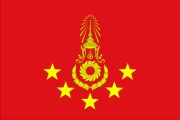
Der interimistische Ministerpräsident Prem ersetzt den Commander-in-Chief of the Royal Thai Army (ผู้บัญชาการทหารบก), Gen Arthit Kamlang-ek (พลเอก อาทิตย์ กำลังเอก, 1925 - ), durch Gen Chavalit Yongchaiyudh (พลเอก ชวลิต ยงใจยุทธ, 1932 - ). Arthit gilt als Konkurrent zu Prem. Arthit erhält den bedeutungslosen Posten des Supreme Commander.
Abb.: Chavalit Yongchaiyudh (ชวลิต ยงใจยุทธ)
[Bildquelle: th.Wikipedia. -- Fair use]
1986-06
Tod von Sang Phathanothai (geb. 1914).
"Sang Phathanothai (1914 – June, 1986) was a Thai politician, union leader, and journalist. He was one of the closest advisors to Field Marshal Phibunsongkhram (แปลก พิบูลสงคราม, 1897 - 1964). In his early 20s Sang began to write regularly on political and international subjects and became a daily commentator for the national radio station. He became famous thanks to his radio show Mr. Mun and Mr. Kong and soon was appointed the head of the radio and newspaper sections of the Thai Government Publicity Department.
In 1938, shortly after becoming prime minister, Phibun named Sang the official government spokesman and put him in charge of all government propaganda. It was in this capacity that when Thailand had to declare war against the Allies in World War II, Sang had the distinction of reading the formal declaration of war over the radio on January 25, 1942.
When the war ended the Allies wanted to prosecute Sang, along with Pibul and a few others, for war crimes. However, as Phibun had during the war refused Japanese pressure to arrest alleged resistance leaders and had allegedly looked the other way as Pridi Phanomyong (ปรีดี พนมยงค์, 1900 - 1983), the leader of the Free Thai Movement (ขบวนการเสรีไทย), developed contacts with the Allies during the war, and with public opinion favourable to all those arrested by the Allies, the Thai Supreme Court ruled that they could not be prosecuted under a war crime statute imposing the death sentence that had been enacted after the end of the war, and ordered their release.
In 1947 Phibun became prime minister once again and invited Sang to join the cabinet. However Sang refused, preferring to remain Phibun's confidant and advisor. He decided to take only the official post of President, and later General Secretary, of the Thai National Traders Union Congress.
With a reduced formal role in government and more time available to other projects, Sang turned himself to journalism, setting up a daily newspaper that he himself edited: Satienraparb ("Forever") soon exerted considerable influence in Thai politics.
In 1956, with Phibun's government openly pro-western and anti-Chinese, Sang and Phibun devised a strategy to establish a backdoor informal communication channel with the Chinese government. They agreed to send two of Sang's children to be brought up under the auspices of Chinese Premier Zhou Enlai as his wards. A daughter aged eight and a son aged twelve secretly travelled through Burma to Beijing. Unfortunately for the children, a sudden change of government resulting from a coup, meant that their father was arrested for his pro-Beijing policies and his newspaper articles about China. Sang's arrest meant loss of contact with Premier Zhou Enlai and consequently with his children. Sang's daughter, Sirin Phathanothai, would later write a book, The Dragon's Pearl, about her experiences growing up among China's elite.
Following the death in 1963 of dictator Sarit Thanarat (สฤษดิ์ ธนะรัชต์, 1908 - 1963, whose government arrested Sang), the political climate eased somewhat in Thailand. It was at this time that Sang, after being under arrest for seven years, was finally brought to trial before a military tribunal. The trial, open to the public and widely covered by Thai media at the time, was the first of many trials for the intellectuals, writers, journalists, lawyers, and university professors who had been arrested without any formal charges and sent to jail for several years under Sarit's military dictatorship.
Sang was specifically accused of publishing subversive and seditious articles on China from October 1956 to September 1958. Sang conducted his own defense and shortly after cross-examining the prosecution witnesses, the military judges dismissed all charges.
After his release from jail, Sang remained involved in politics until his death in 1986."
[Quelle: http://en.wikipedia.org/wiki/Sang_Phathanothai. -- Zugriff am 2012-06-13]
1986-06-23
In Phuket (ภูเก็ต) wird der Notstand erklärt. In Wütende Massen hatten eine Tantal-Fabrik und das Phuket Merlin Hotel in Brand gesetzt. Die Tantal-Fabrik, die im Oktober in Betrieb genommen werden sollte, wird völlig zerstört. Der Bau der Anlage hatte 1,2 Milliarden Baht gekostet. Der Sachschaden am Hotel beträgt ca. 50 Mio. Baht. Die Randalierer behaupten, die Tantal-Anlage würde die Umwelt und die Tourismusindustrie zerstören. Das Hotel wurde in Brand gesetzt, weil dort der Industrieminister weilte, der gekommen war, um in der Angelegenheit Tantal-Anlage mit der Bevölkerung zu diskutieren. Die Tantal-Anlage wird in der Industriezone Map Tha Phut (มาบตาพุด) neu aufgebaut,
Abb.: Lage von Phuket (ภูเก็ต) und Map Tha Phut (มาบตาพุด)
[Bildquelle: OpenStreetMap. -- Creative Commons Lizenz (Namensnennung, share alike)]
Abb.: Phuket Merlin Hotel, 2008
[Bildquelle: Eustaquio Santimano. -- http://www.flickr.com/photos/eustaquio/3149576532/. -- Zugriff am 2011-12-09. -- Creative Commons Lizenz (Namensnennung)]
Abb.: Tantal
[Bildquelle: Alchemist-hp / Wikimedia. -- GNU FDLicense]
"Tantal [ˈtantal] ist ein chemisches Element mit dem Symbol Ta und der Ordnungszahl 73; im Periodensystem steht es in der fünften Nebengruppe oder Vanadiumgruppe. Es ist ein selten vorkommendes, duktiles, graphitgraues, glänzendes Übergangsmetall. Tantal wird vorwiegend für Kondensatoren mit hoher Kapazität bei gleichzeitig geringer Größe verwendet. Da das Metall ungiftig und gegen Körperflüssigkeiten inert ist, wird es auch für Implantate, etwa als Knochennagel, eingesetzt." [Quelle: http://de.wikipedia.org/wiki/Tantal. -- Zugriff am 2011-12-09]
1986-07-01

Suchart Kosolkitiwong (สุชาติ โกศลกิติวงศ์) ergibt sich nach fünf Jahren im Untergrund der Polizei. Suchart war der Anführer einer buddhistischen millenaristischen Bewegung. Er hatte in einem Pamphlet prophezeit, dass Thailand im Oktober 1982 von vietnamesischen und russischen Streitkräften besetzt wird. Suchart behauptete, dass er vom Geist des verstorbenen Luang Pu Tuad geleitet wird. Tuad hatte sich übernatürlicher Kräfte gerühmt. Die Polizei warf 1981 Suchart vor, die nationale Kultur zu beflecken und die nationale Sicherheit zu gefährden. Später ließ man diese Vorwürfe fallen. Suchart wird 1991 Mönch und stirbt 2005.
1986-07-09
Offizielle Einführung von Mobiltelefon durch die Telephone Organisation of Thailand (TOT - ทีโอที).
1986-07-12
Das Thai-Japanese Stadium (10.000 Plätze) in Bangkok ist voll von Fans, die ein Konzert von Thongchai "Bird" McIntyre (ธงไชย "เบิร์ด" แมคอินไตย์, 1958 - ) und seiner Gäste hören. Das "Bird Fever" wird immer höher.
Abb.: Lage des Thai-Japanese Stadium
[Bildquelle: OpenStreetMap. -- Creative Commons Lizenz (Namensnennung, share alike)]
Abb.: Thongchai McIntyre (ธงไชย แมคอินไตย์)
[Bildquelle: Sry85 / th.Wikipedia. -- Creative Commons Lizenz (Namensnennung)]Künstlerlink auf Spotify:
URI: spotify:artist:0fGHTj05vtJqkbogP7tW1x
URL: spotify:artist:0fGHTj05vtJqkbogP7tW1x
"Thongchai McIntyre (Thai: ธงไชย แมคอินไตย์; * 8. Dezember 1958 in Bangkok als Albert Thongchai McIntyre) ist ein thailändischer Sänger und Schauspieler. Er ist auch als Bird Thongchai, Bird McIntyre, Pi Bird (älterer Bruder Bird) oder einfach Bird bekannt und mit mehr als 20 Millionen verkauften Alben der erfolgreichste thailändische Sänger. Seine Musik ist dem Thaipop und dem Luk Thung (ลูกทุ่ง)zuzuordnen. Biografie
Thongchai McIntyre wurde am 8. Dezember 1958 in Bangkok als Sohn von James und Udom McIntyre geboren. Er wuchs in einer Familie mit vielen Musikern auf. Sein Vater starb, als Thongchai noch ein Kind war. Trotz seiner musikalischen Wurzeln begann Thongchai seine berufliche Laufbahn als Bankangestellter. Eines Tages lernte er im Rahmen seiner Tätigkeit den bekannten thailändischen TV-Produzenten Kai Varayuth (ไก่ วรายุฑ) kennen, der in ihm ein Talent als Entertainer sah. Und so bekam er seine erste Rolle in einer thailändischen TV-Serie, in der er die in ihn als Talent gesetzten Hoffnungen erfüllen konnte. Weitere Rollen folgten, von denen seine bekannteste die des Captain Kobori in Koo Kam (คู่กรรม), einer tragischen Liebesgeschichte zwischen einem japanischen Soldaten (gespielt von Thongchai) und einer Thailänderin während des zweiten Weltkrieges ist. Diese Rollte spielte er nochmals 1996 in der Kinoadaption der Serie mit dem Titel Sunset at Chaophraya.
Den Gipfel seiner Musikkarriere erreichte er in den frühen 90er Jahren. Seine wohl bekanntesten Titel sind Duay Rak Lae Pook Pan (ด้วยรักและผูกพัน), Koo Gud (คู่กัด), Sabai Sabai (สบาย สบาย) und Kob Jai Jing Jing ("ขอบใจจริงๆ). Seine in letzter Zeit erfolgreichen Veröffentlichungen beinhalten auch Luk Thung Singles wie Mah Tammai (มาทำไม im Duett mit Jintara Poonlarp จินตหรา พูนลาภ), Fan Ja (แฟนจ๋า, zusammen mit Jintara Poonlarp, Jarin B. (Joey Boy), Nat Myria Benedetti - นัท มีเรีย - und Katreeya English - แคททารียา อิงลิช), Lao Su Kan Fang (เล่าสู่กันฟัง), Yak Tham Kor Tob (อยากถามก็ตอบ) und Mai Kang Ying Pae (ไม่แข่งยิ่งแพ้) von seinem Album "Volume One". Die westliche Welt wurde Mitte der 90er auf ihn aufmerksam, als er der erste thailändische Künstler wurde, der einen internationalen MTV-Award erhielt. Zudem hatte sein Film „Sunset at Chaopraya“ sowohl in Japan als auch in den USA Erfolg und sowohl CNN als auch Variety berichteten über ihn. Im Jahr 2010 machte Thongchai eine Mini-Tournee durch die USA mit Auftritten in Los Angeles und New York, welche die erste internationale Tournee eines thailändischen Künstlers in der Geschichte überhaupt war.
Ende 2007 veröffentlichte er das Album „Simply Bird“ (ซิมพลีย์ เบิร์ด), welches unter anderem die Lieder „Chuay Rap Tee“ (ช่วยรับที) und „Mee Tae Kid Tueng“ (มีแต่คิดถึง) enthält."
[Quelle: http://de.wikipedia.org/wiki/Thongchai_McIntyre. -- Zugriff am 2011-12-09]
1986-07-17/18
Zweitägiger Streik der Dockarbeiter des Bangkoker Hafens Khlong Toey (คลองเตย). Die Arbeiter protestieren gegen die Entscheidung des Kabinetts, den Kranbetrieb für Container von der Port Authority of Thailand (PAT, การท่าเรือแห่งประเทศไทย - กทท.) auf die Express Transport Organisation (ETO) zu übertragen. Dadurch würde die PAT ca. 400 Mio. Baht jährliche Einnahmen verlieren. Im Hafen werden jährlich ca. 400.000 Container umgesetzt.
Abb.: Lage von Khlong Toey (คลองเตย)
[Bildquelle: OpenStreetMap. -- Creative Commons Lizenz (Namensnennung, share alike)]
Abb.: Krananlagen, Hafen Khlong Toey (คลองเตย), 2003
[Bildquelle: Ahoerstemeier / Wikipedia. -- GNU FDLicense]
1986-07-26

Abb.: Sanitsuda Ekachai (สนิทสุดา เอกชัย)
[Bildquelle: FAO]Bangkok Post: Sanitsuda Ekachai (สนิทสุดา เอกชัย, 1955 - ): "Buddhism offers refuge to confused youth."
Die Jugend ist wieder zunehmend an Buddhismus interessiert: Bücher über Buddhismus verkaufen sich wie frische Semmel, ebenso Tonbandkassetten mit Predigten berühmter Mönche; im Wat Phra Dhammakaya (วัดพระธรรมกาย) in Pathum Thani (ปทุมธานี) meditieren Zehntausende weißgekleideter Jugendlicher.
Abb.: Jugendliche im Wat Phra Dhammakaya (วัดพระธรรมกาย), Pathum Thani (ปทุมธานี), 2010
[Bildquelle: Praphol Chattharakul. -- http://www.flickr.com/photos/mhonpoo/5264236666/. -- Zugriff am 2012-09-25. -- Creative Commons Lizenz (Namensnennung, keine kommerzielle Nutzung, keine Bearbeitung)]
Abb.: Lage von Wat Phra Dhammakaya (วัดพระธรรมกาย)
[Bildquelle: OpenStreetMap. -- Creative Commons Lizenz (Namensnennung, share alike)]
1986-07-27

Wahlen.
Abb.: Sitzverteilung im Parlament
"General elections were held in Thailand on 27 July 1986. The result was a victory for the Democrat Party, which won 100 of the 347 seats. Voter turnout was 61.4%.[1] Results
Party Votes % Seats +/- Democrat Party (พรรคประชาธิปัตย์) 8,477,701 22.5 100 +44 Thai Nation Party (พรรคชาติไทย) 6,496,370 17.3 63 -10 Social Action Party (พรรคกิจสังคม) 4,560,615 12.1 51 -41 United Democrat Party 3,814,651 10.1 38 New People Party 2,786,105 7.4 18 New Thai Citizen Party 2,612,717 6.9 24 -12 Community Action 2,268,346 6.0 15 New Progress Party 1,998,721 5.3 9 +6 United Thai Party 1,658,812 4.4 19 New National Democrat Party 1,078,128 2.9 3 -12 Mass Party 723,758 1.9 3 New Liberalism Party 404,960 1.1 1 New Labour Democrat Party 246,512 0.7 1 +1 New Force Party 232,027 0.6 1 +1 Thai People Party 196,527 0.5 1 +1 Rak Thai 85,241 0.2 0 New Invalid/blank votes 564,060 - - - Total 16,070,957 100 347 +23 Source: Nohlen et al [Quelle: http://en.wikipedia.org/wiki/Thai_general_election,_1986. -- Zugriff am 2011-11-04]
1986-08-05 - 1988-08-04

44. Kabinett: Prem (เปรม) III
1986-08-05
Die Armee stellt wieder 28 der am misslungenen Putsch vom 1. April 1981 beteiligten Offiziere ("Jungtürken") ein.
1986-08-05
Da die Ölpreise dramatisch fallen, beschließt die OPEC, ab 1. September die Fördermenge von Erdöl zu drosseln.
Abb.: Ölpreisverfall 1986
[Bildquelel: PD-USGOV-DOE / Wikipedia. -- Public domain]
1986-08-09
Die Polizei sperrt alle Zufahrtstraßen nach Ban Wang Rangnoi (บ้านวังรางน้อย), Amphoe Sung Noen (สูงเนิน), Provinz Nakhon Ratchsima (นครราชสีมา). Dort verteilt ein Dreijähriger Wundermedizin, wenn man ihm ein Geschenk, das für 10 Baht verkauft wird, gibt. Ca. 50.000 Personen sind unterwegs, um das Quacksalber-Baby aufzusuchen. Der Bub selbst ist unterernährt und erschöpft.
Abb.: Lage von Ban Wang Rangnoi (บ้านวังรางน้อย)
[Bildquelle: OpenStreetMap. -- Creative Commons Lizenz (Namensnennung, share alike)]
1986-08-22
Der 16jährige Wattana Pu-Ob-Orm ( วัฒนา ภู่โอบอ้อม, 1970 - ) gewinnt an den Camus Masters Snooker Championships in Chiang Mai (เชียงใหม่). Snooker ist eine Variante von Billard.
Abb.: Lage von Chiang Mai (เชียงใหม่)
[Bildquelle: OpenStreetMap. -- Creative Commons Lizenz (Namensnennung, share alike)]
Abb.: Snooker, 2006
[Bildquelle: Peter Huys. -- http://www.flickr.com/photos/darksidex/275996375/. -- Zugriff am 2012-04-22. -- Creative Commons Lizenz (Namensnennung, share alike)]
"James Wattana (* 17. Januar 1970 in Bangkok, Thailand als Wattana Phu-Ob-Om, วัฒนา ภู่โอบอ้อม, 2003 umbenannt in Ratchapol Pu-Ob-Orm, รัชพล ภู่โอบอ้อม, Spitzname: Thong Sitchai, ต๋อง ศิษย์ฉ่อย, außerhalb Thailands: James Wattana) ist ein thailändischer Profi-Snooker-Spieler. Karriere
Wattana wurde 1970 in Khlong Toei (คลองเตย), Bangkok, geboren. Seine Snookerkarriere begann mit neun Jahren in einem der Snookerclubs seiner Familie. Man erzählt sich, dass er sich auf einen Wasserkasten stellen musste, um die Kugeln richtig anzuspielen.
1988 gewann er die IBSF-Amateurweltmeisterschaft und wurde in dem folgenden Jahr Profi. Sein erster großer Erfolg im Profibereich war, als er 1992 die Strachan Open gewann. Es war der erste von den insgesamt drei Ranglistenturniersiegen in seiner Karriere. Die anderen beiden folgten 1994 und 1995 beim Thailand Masters.
In seiner Karriere hat er mehr als 1.500.000 £ an Preisgeldern gewonnen und bereits drei Maximum Breaks (also ein Break von 147 Punkten) in offiziellen Turnieren erzielt (1991 Mita World Masters, 1992 British Open, 1997 Catch China International). Dazu kommen 149 Century Breaks. Seine beste Platzierung, die er in der Snookerweltrangliste erreichen konnte, war Position drei in der Saison 1994/95. Nachdem er für die Saison 2008/09 nur noch auf Platz 66 in der Weltrangliste gesetzt war, musste er die Snooker Main Tour vorerst verlassen.
Er nahm an der Amateur WM 2008 in Wels, Österreich teil und verlor gegen den späteren Weltmeister Thepchaiya Un Nooh in der Runde der letzten 16. 2009 gewann er die Asian Championships in Tangshan, China gegen Mei Xiwen mit 7:3 im Finale. Damit hatte sich der damals 39jährige wieder ein Ticket für die Snooker Main Tour 2009/10 erkämpft.
Wattana genießt in Thailand eine hohe Wertschätzung und verfügt über einen Diplomatenpass, um ohne Probleme zu Turnieren reisen und an ihnen teilnehmen zu können. Er ist in der Rushden Snooker Academy eingeschrieben, wo auch Peter Ebdon, Ding Junhui (丁俊晖) und der Deutsche Lasse Münstermann trainieren."
[Quelle: http://de.wikipedia.org/wiki/James_Wattana. -- Zugriff am 2011-12-09]
1986-09-04


Far Eastern Economic Review: der neuseeländische Journalist John McBeth (1944 - ) über das Königshaus:
"THAILAND: Voice of the palace: The royal family denies some persistent rumours By John McBeth in Bangkok
[...]
Among other things, the princess [Chulabhorn, สมเด็จพระเจ้าลูกเธอ เจ้าฟ้าจุฬาภรณวลัยลักษณ์ อัครราชกุมารี, 1957 - ] responded to queries about whether her mother was suffering from a terminal illness and then adroitly handled one particularly barbed question in which Channel 3 interviewer Thanatsri Svasti [หม่อมราชวงศ์ถนัดศรี สวัสดิวัตน์, 1927 - ] asked her if it was true that the queen was trying to "usurp the king's work," a reference to perceived behind-the-scenes palace intrigue. Most Thais appeared surprised at the general frankness of the exchange in a country where the king and the royal family hold a place that is above reproach or even question. But responsible officials say that the princess was obviously aware of that the questions would be asked.
[...]
The princess' answer to the question of whether the queen was seeking to usurp the king's work was the first comment by a member of the royal family on a rumoured split. "It's not true," she said. "We all work for his majesty because of our loyalty towards him. Nobody in our family wants popularity for themselves. Everybody is sharing the work and we work as a team. (The king) is keen on water resources, irrigation and agriculture, with Crown Princess Sirindhorn helping out. (The queen) is interested in social welfare, public health and supplementary occupations to which I give a helping hand. But again, there are people who say that our family is divided into two sides, which is not true at all."
The princess made no mention of Crown Prince Vajiralongkorn [สมเด็จพระบรมโอรสาธิราช เจ้าฟ้ามหาวชิราลงกรณ สยามมกุฎราชกุมาร, 1952 - ], the often-controversial heir to the Thai throne. But he too opened up to the media recently with the 15 August issue of the women's magazine, Dichan [ดิฉัน], carrying a 32-page interview with him on mainly personal matters which lasted for more than eight hours.
However, the crown prince refused to answer a question about whether he was a jaochoo [เจ้าชู้] (a womaniser), a label similar to that given him by his mother during an interview in the US several years ago, and he denied refusing to pay for antique purchases, blaming that and other purported misdemeanours on people who he said were using his name for their own benefit."
1986-09-20
Bei der Miss Thailand World Wahl kommt es zu Handgreiflichkeiten, weil einige der Teilnehmerinnen mit der Wahl der Jury nicht einverstanden sind.
1986-09-23
In Bangkok kommt es zu einem Kampf zwischen insgesamt 300 Mitarbeitern zweier konkurrierender "gemeinnütziger" Rettungsunternehmen um den Leichnam eines Verkehrsunfalls. Die Polizei schießt in die Luft, um den Kampf zu beenden. Das Spendenaufkommen solcher Unternehmen hängt von der Anzahl der geborgenen Leichen ab.
1986-09-25
Das Gesetz beschließt eine Novelle zum Strafgesetzbuch, gemäß der Sex mit einer Person unter 15 Jahren - unabhängig von deren Zustimmung - mit Lebenslänglich bestraft wird.
1986-10
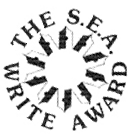
Der Maler und Dichter Angkarn Kallayanapong (อังคาร กัลยาณพงศ์, 1926 - ) erhält den Southeast Asian Writers Award für seine Gedichtsammlung Panithan Kawee (ปณิธานกวี).
Abb.: Angkarn Kallayanapong (อังคาร กัลยาณพงศ์)
[Bildquelle: th.Wikipedia. -- Fair use]
Abb.: Einbandtitel
1986-10-10
Der Innenminister ordnet den Gouverneuren der südlichsten Provinzen an, dass sie das Verbot muslimischer Frauenkleidung für Staatsbedienstete und Studentinnen aufheben. Zuvor hatten muslimische Parlamentsabgeordnete gegen das Burkaverbot protestiert und darauf hingewiesen, dass im Süden 50% der Staatsbediensteten Muslime sind.
Abb.: Malayische Burka (برقع)
[Bildquelle: Luis E. Cerezo. -- http://www.flickr.com/photos/luiscerezo/1338920147/. -- Zugriff am 2011-12-09. -- Creative Commons Lizenz (Namensnennung, keine kommerzielle Nutzung, keine Bearbeitung)]
1986-10-13
Tod des frühen Thai-Pop / Luk Thung (ลูกทุ่ง) Sängers Somyot Thatsanaphan (เรือตรี สมยศ ทัศนพันธ์, geb. 1915).
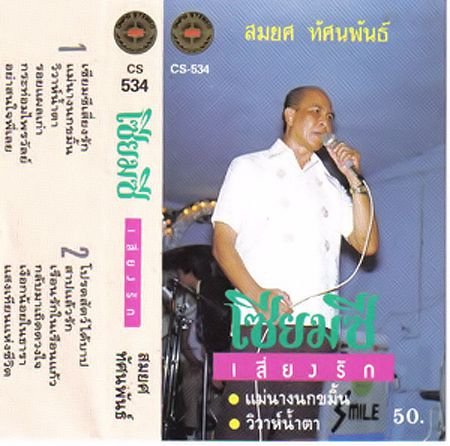
Abb.:
Kassettentitel
[Fair use]
1986-11 - 1987-03
In ganz Thailand militärische Kampagne gegen die restlichen Stützpunkte der Communist Party of Thailand (CPT, พรรคคอมมิวนิสต์แห่งประเทศไทย).
1986-11-08
Ein Zug mit einer unbesetzten Lokomotive rast im Hauptbahnhof Hua Lamphong (หัวลำโพง) in Bangkok mit 50 km/h über den Prellbock hinaus. Vier Tote und vier Verletzte. Man hatte den Zug bei einer Reparatur mit laufendem Motor unbeaufsichtigt gelassen. Es wäre zu einer Katastrophe gekommen, hätte man den Hauptbahnhof angesichts des heranrasenden Zugs nicht in letzter Minute evakuieren können.
Abb.: Lage des Hauptbahnhofs Hua Lamphong (หัวลำโพง)
[Bildquelle: OpenStreetMap. -- Creative Commons Lizenz (Namensnennung, share alike)]
1986-12-05

59. Geburtstag des Königs. Beginn des 5. Zwölfjahreszyklus im Leben des Königs.
- die Königsfamilie gibt 999 Mönchen Speisen
- 200 Muay-Thai-Boxkämpfe (มวยไทย)
- 59 Molam- (หมอลำ) und Luk-Thung-Shows (ลูกทุ่ง)
- 100 Vorführungen klassischer Thai-Musik
- Hunderte von Likae-Aufführungen (ลิเก)
Ministerpräsident Prem zündet die erste Geburtstagskerze an. Ihm folgen unzählige Thai.
1986-12-12


Es erscheint die grundlegende Dissertation:
Gray, Christine <1951 - >: Thailand: the soteriological state in the 1970’s. -- 1986. -- 2 Bde. (1945 S.). -- Thesis (Ph. D.), University of Chicago, Department of Anthropology, 1986-12-12. -- Online: http://robinlea.com/pub/ThailandTheSoteriologicalState/toc.html. -- Zugriff am 2013-01-23
1986-12-15 - 1986-12-18
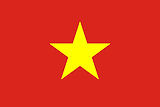
6th National Congress of the Communist Party of Vietnam (Đại hội Đảng Cộng sản Việt Nam VI) leitet Doi moi (Đổi mới) ein.
"Đổi mới (vietnamesisch für Erneuerung) werden die 1986 in Vietnam initiierten marktwirtschaftlichen Reformen genannt. Der wirtschaftlichen Liberalisierung folgte, ähnlich wie in der Volksrepublik China, zunächst keine politische Liberalisierung. Die persönlichen Freiheiten wurden sogar weiter eingeschränkt.[1] Der politische Doi Moi ist erst seit 2006 geplant.[2] Die Umsetzung der Zusagen ist von Seiten der Regierung bislang jedoch kaum zu spüren." [Quelel: http://de.wikipedia.org/wiki/%C4%90%E1%BB%95i_m%E1%BB%9Bi. -- Zugriff am 2015-05-07]
1986-12-19

Premiere des Films über den Vietnamkrieg Platoon von Oliver Stone 81946 - ). Der Film wird 1987 mit vier Oscars ausgezeichnet und ist ein Kassenschlager.
Abb.: Plakat
[Bildquelle: Wikipedia. -- Fair use]
ausführlich: http://www.payer.de/thailandchronik/ressourcen.htm
Zu Chronik 1987 / B. E. 2530. -- 1. undatiert